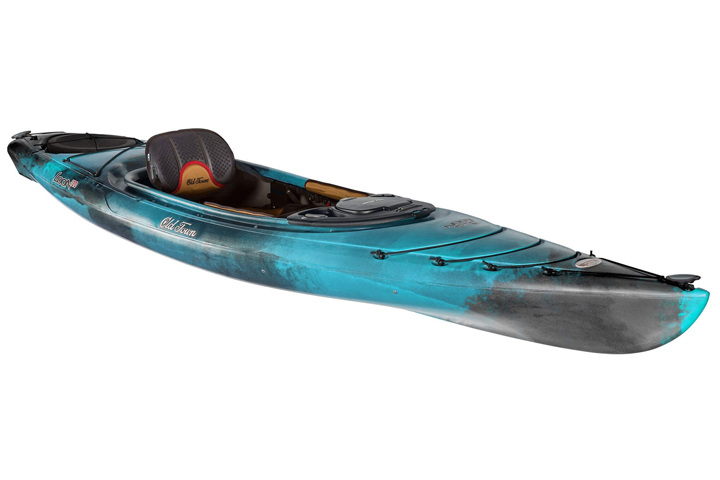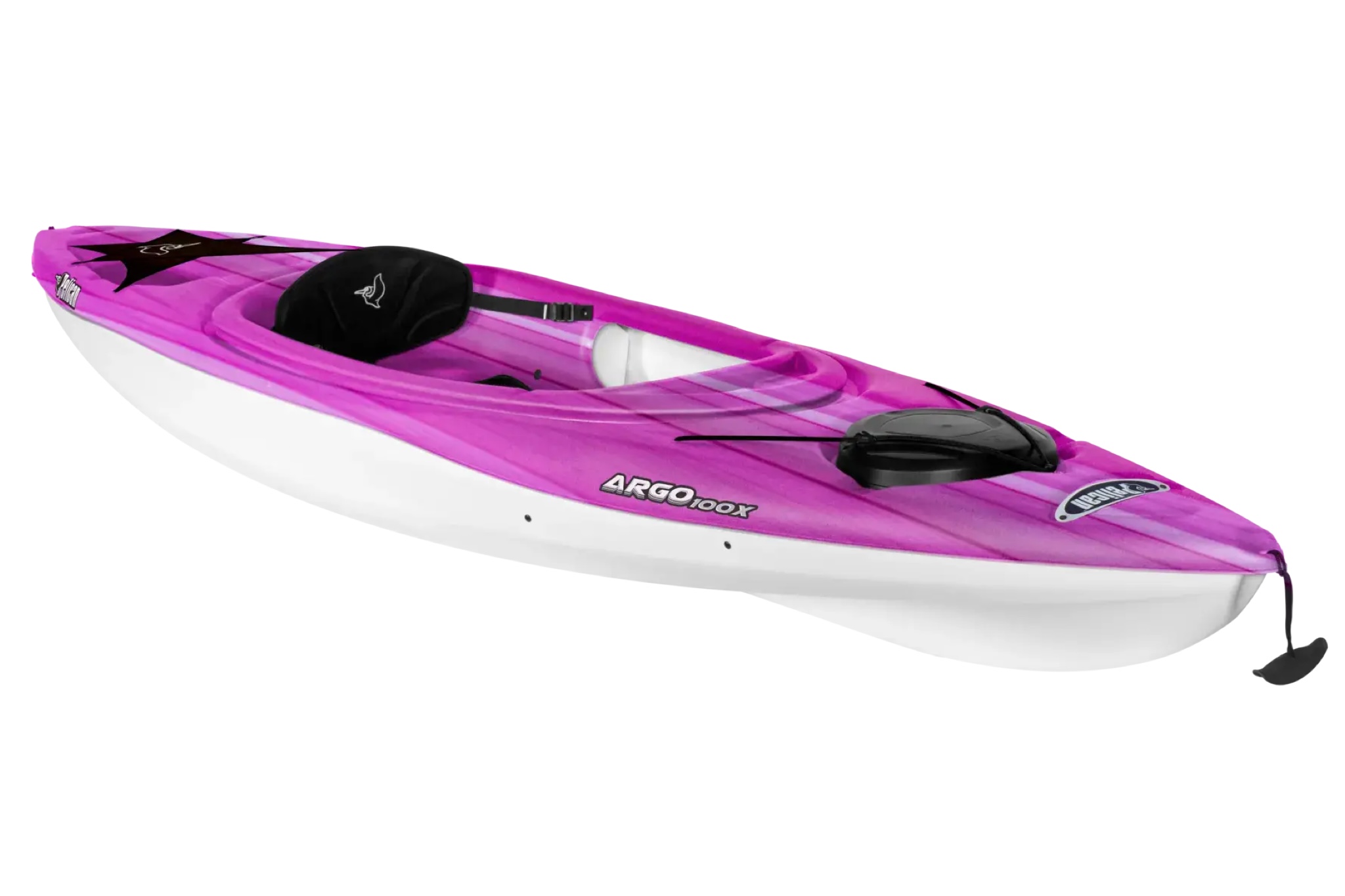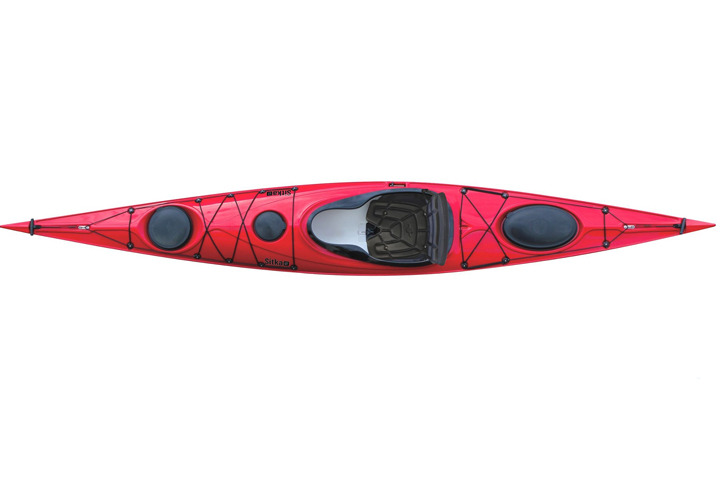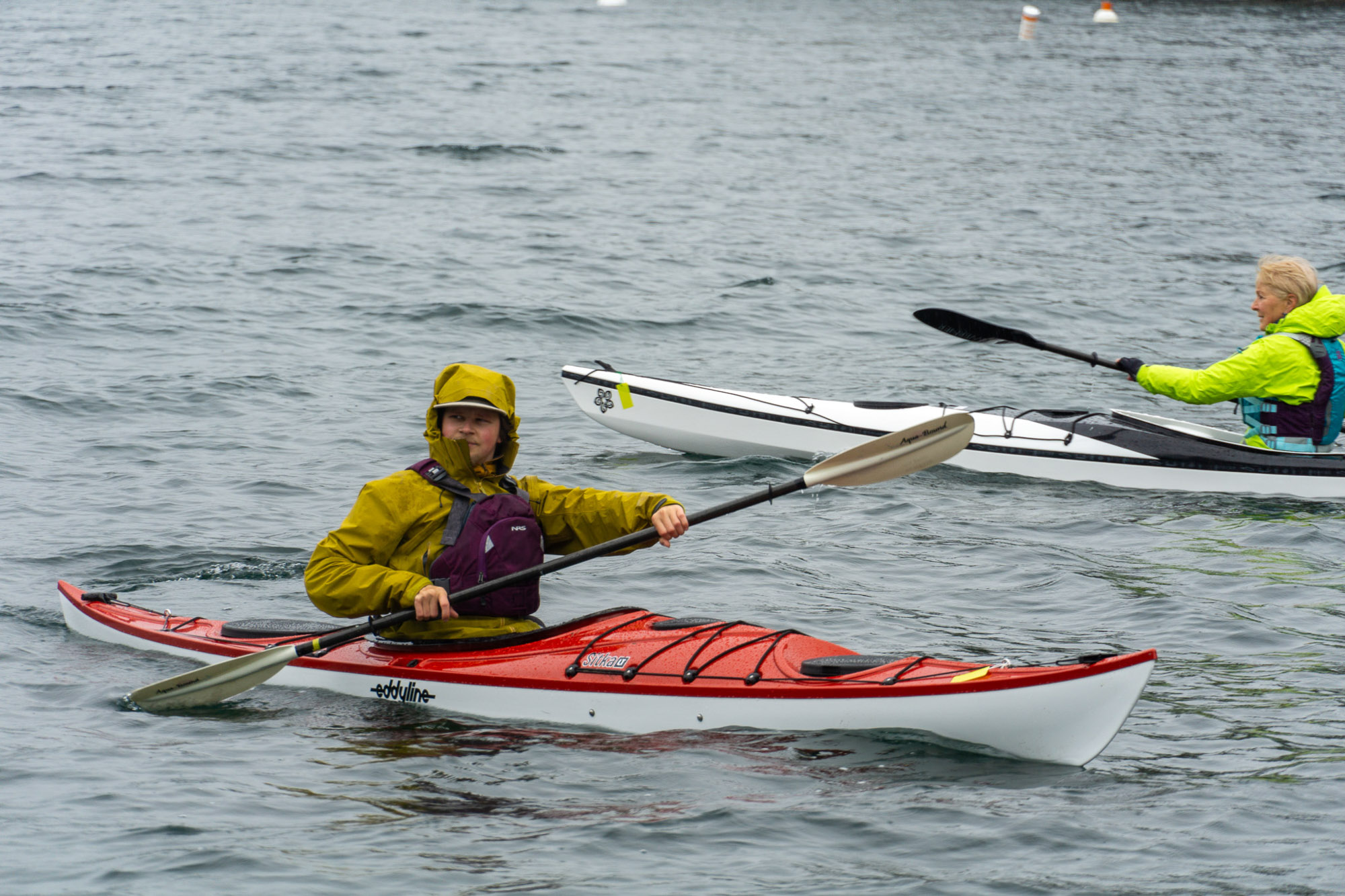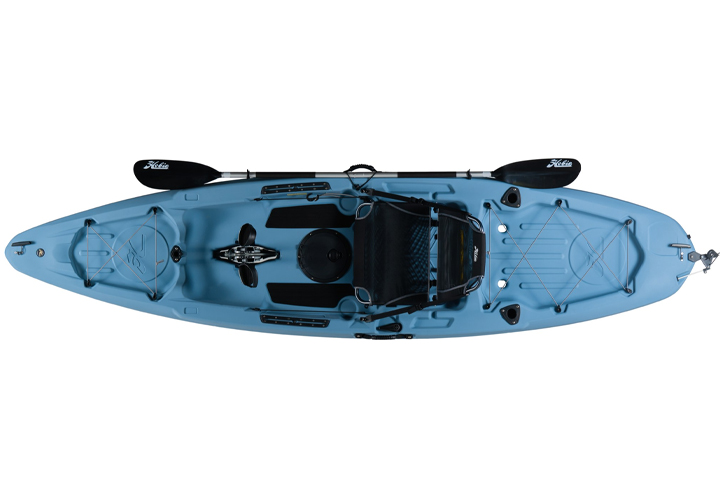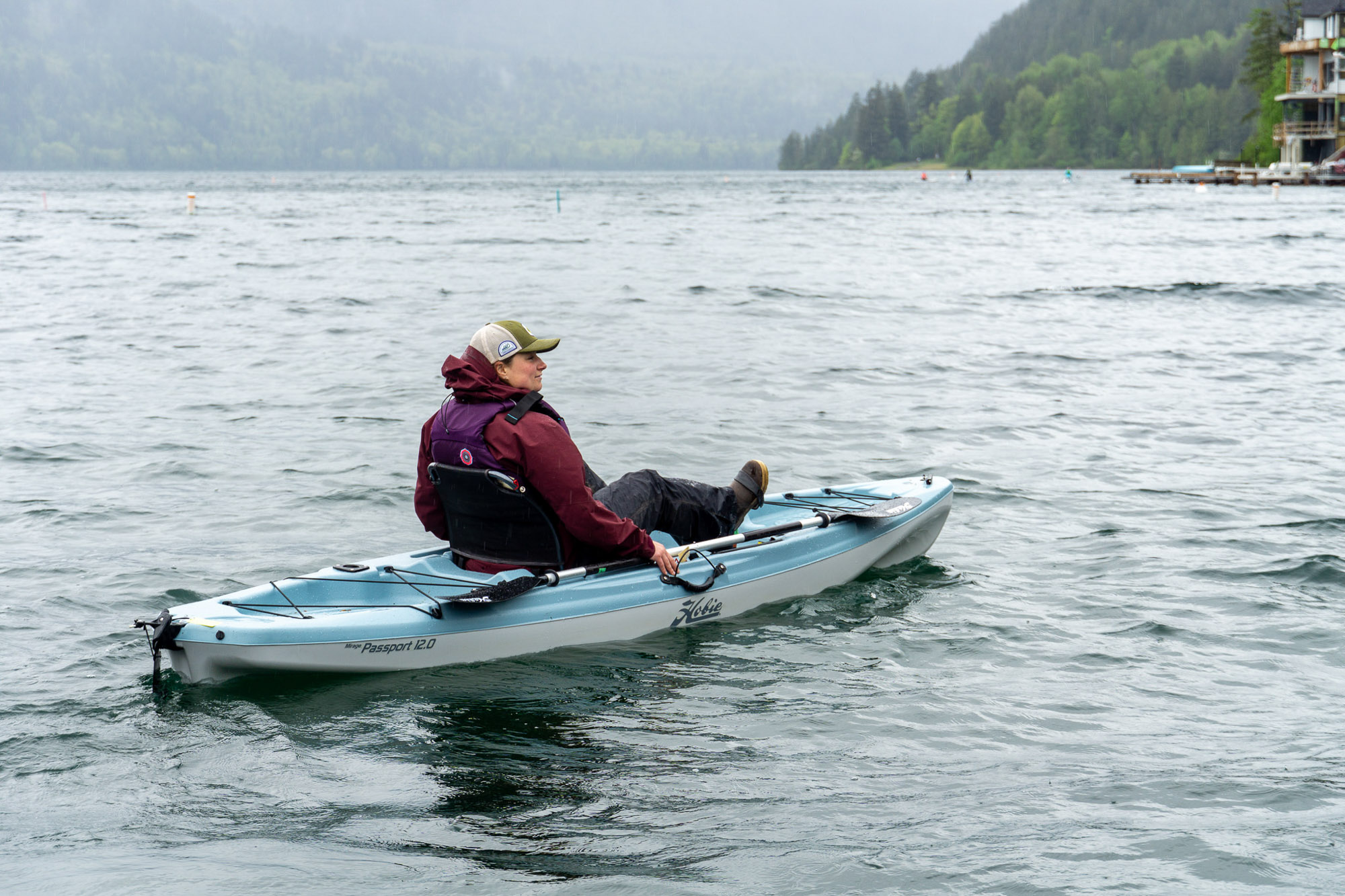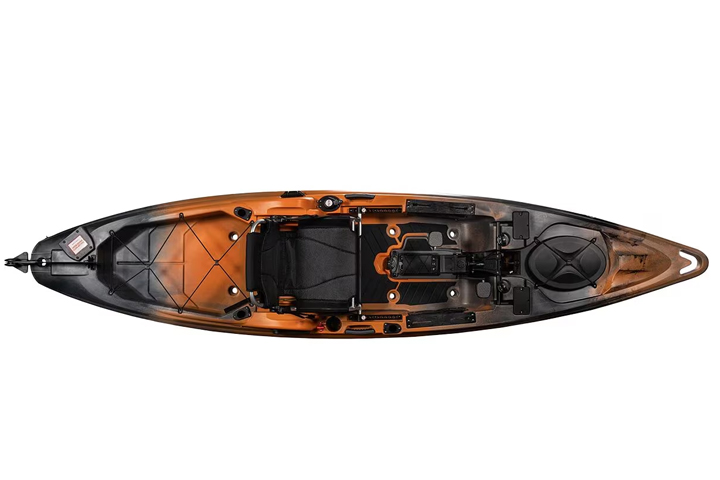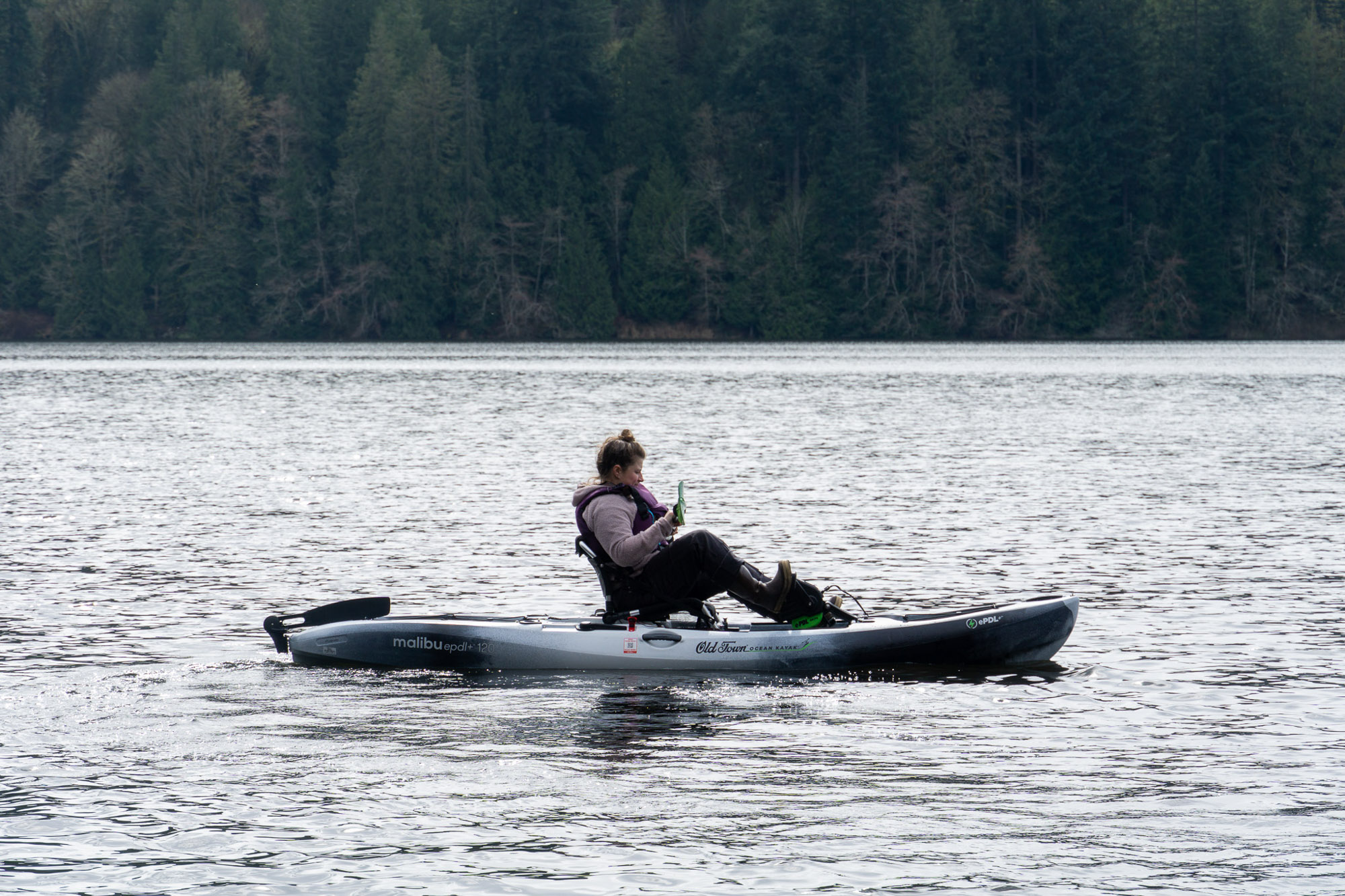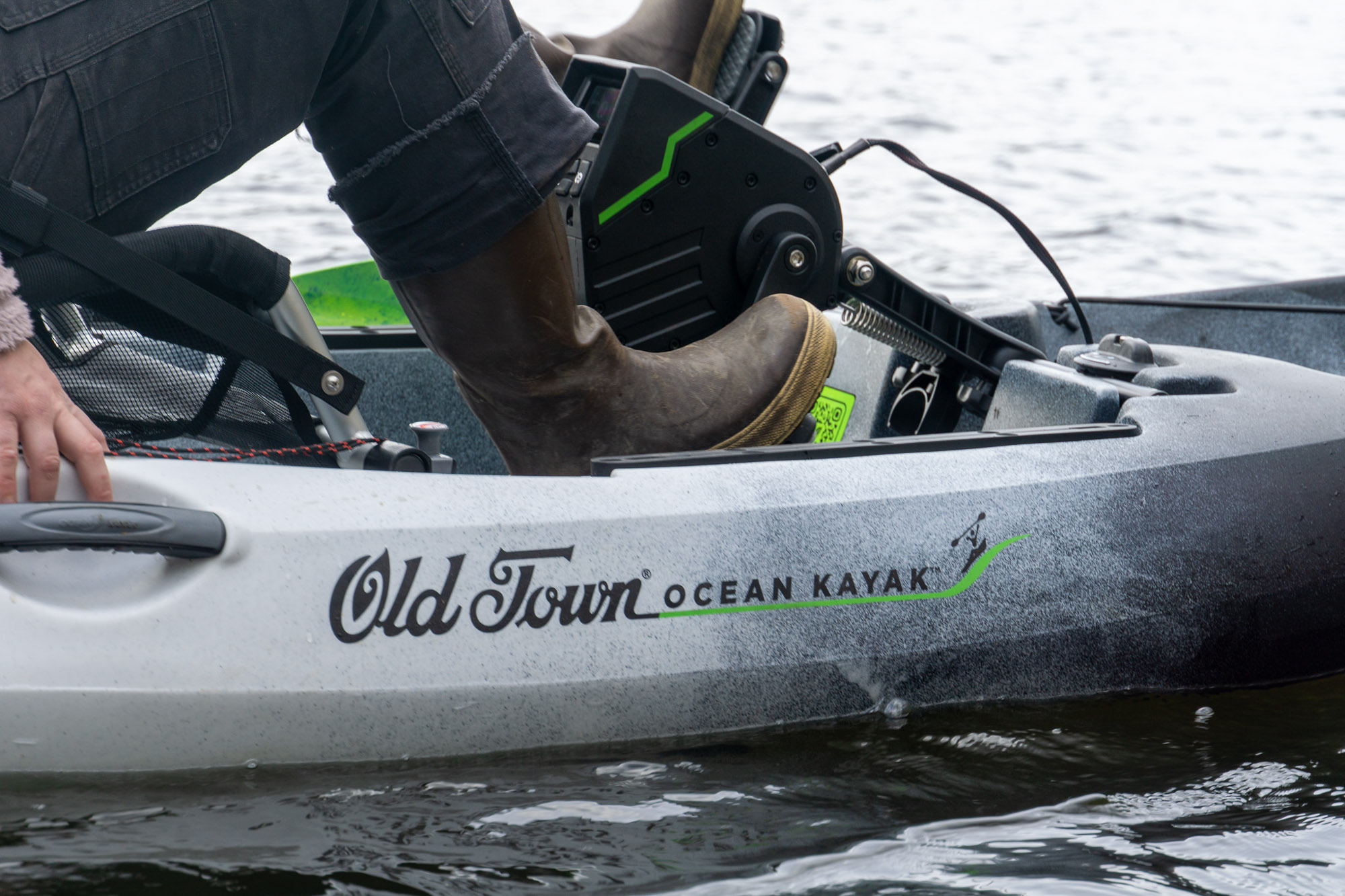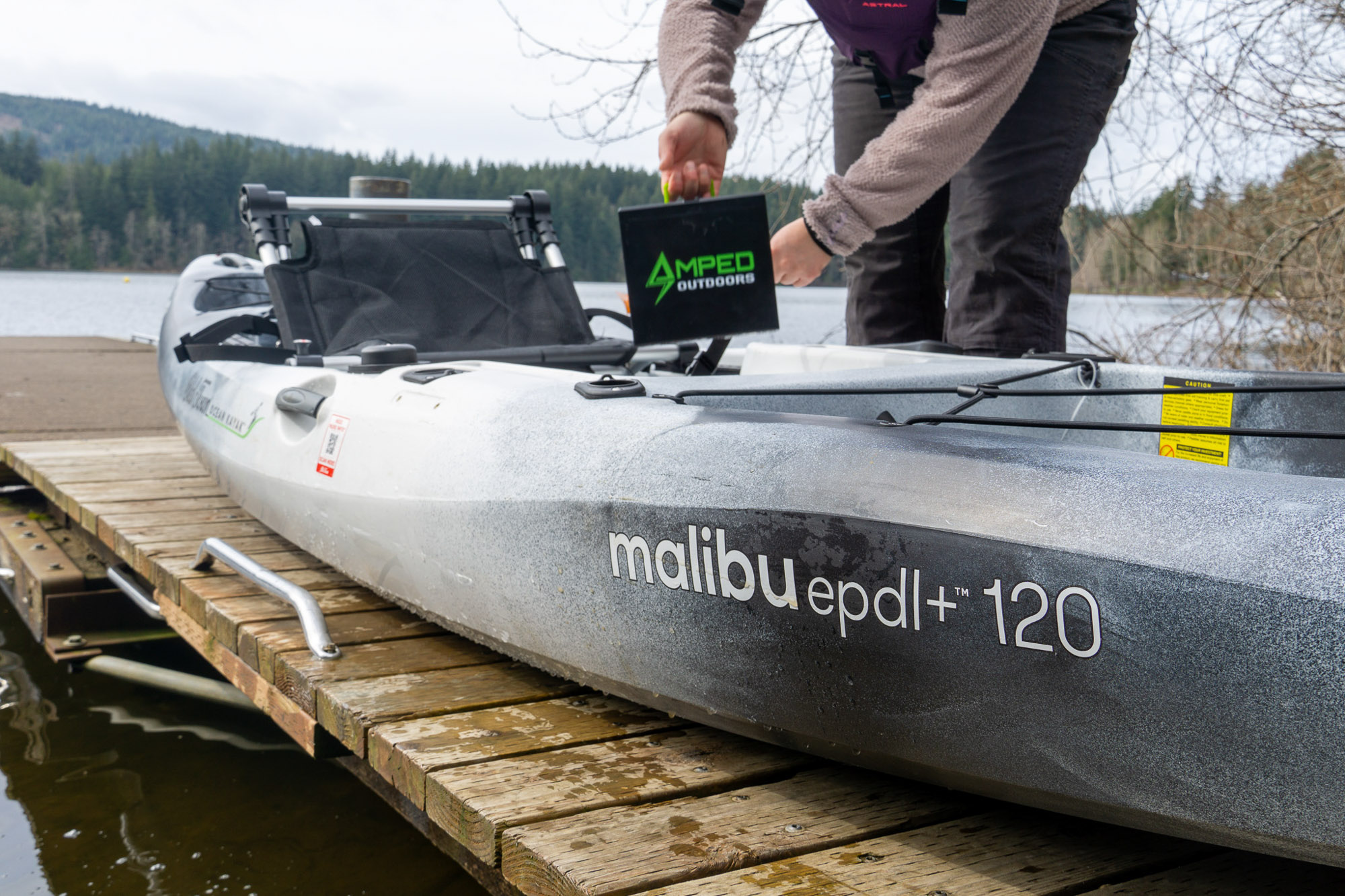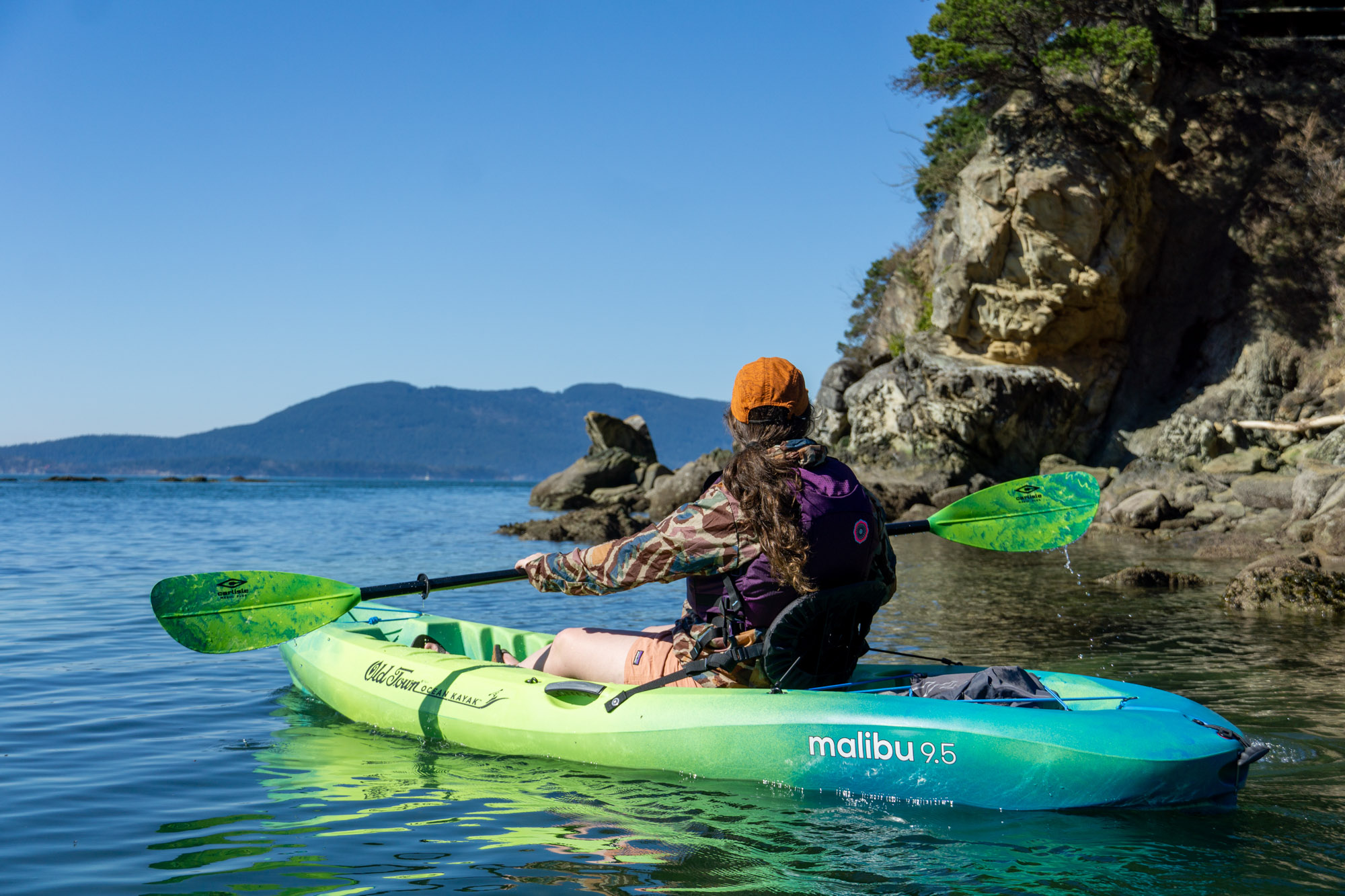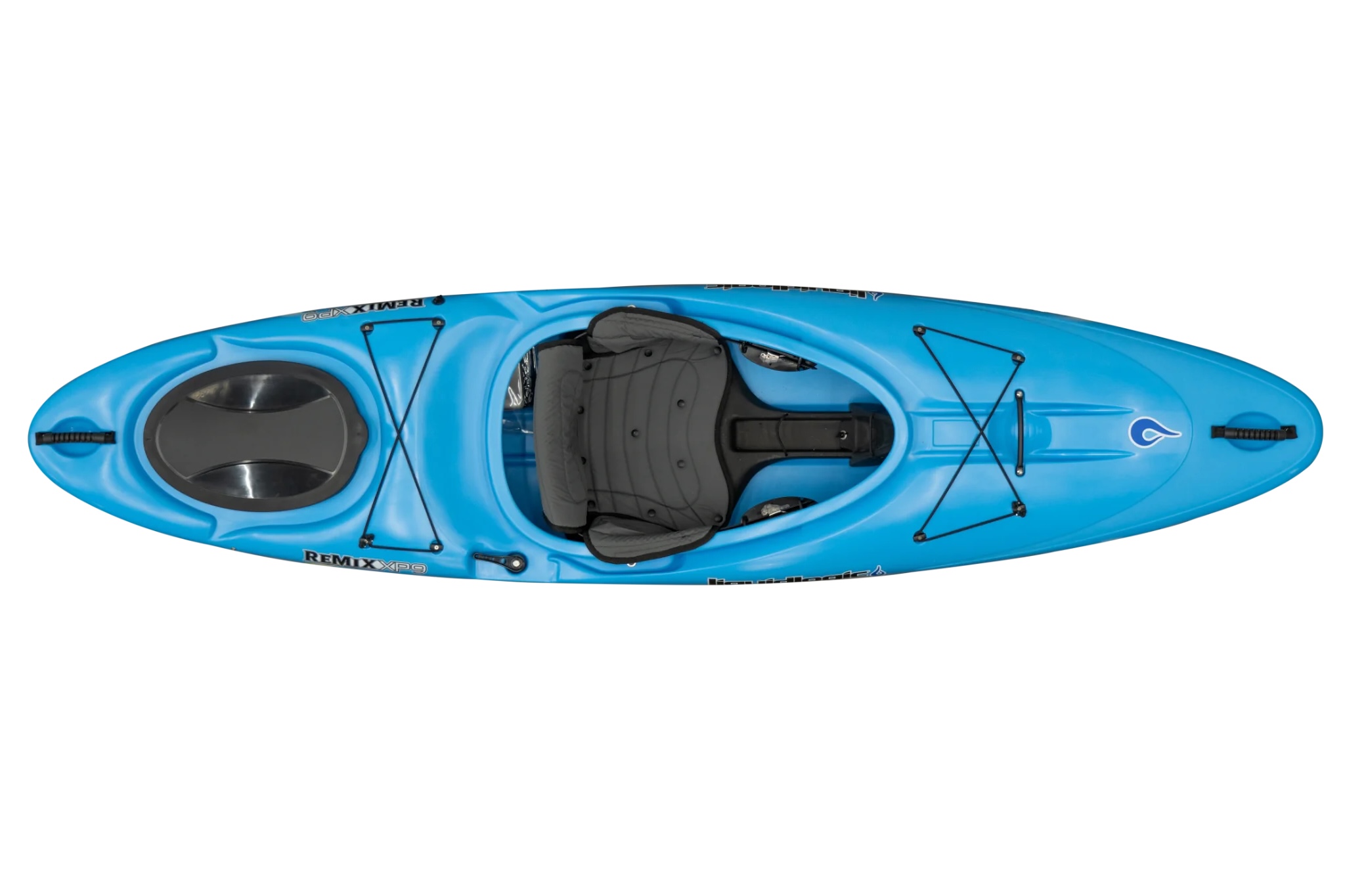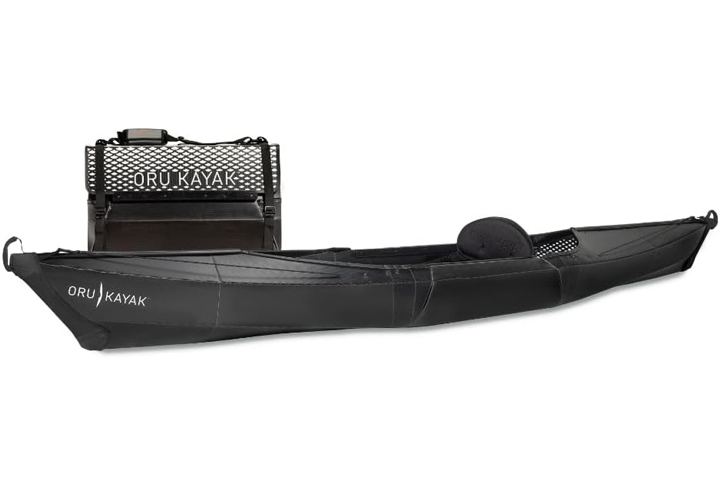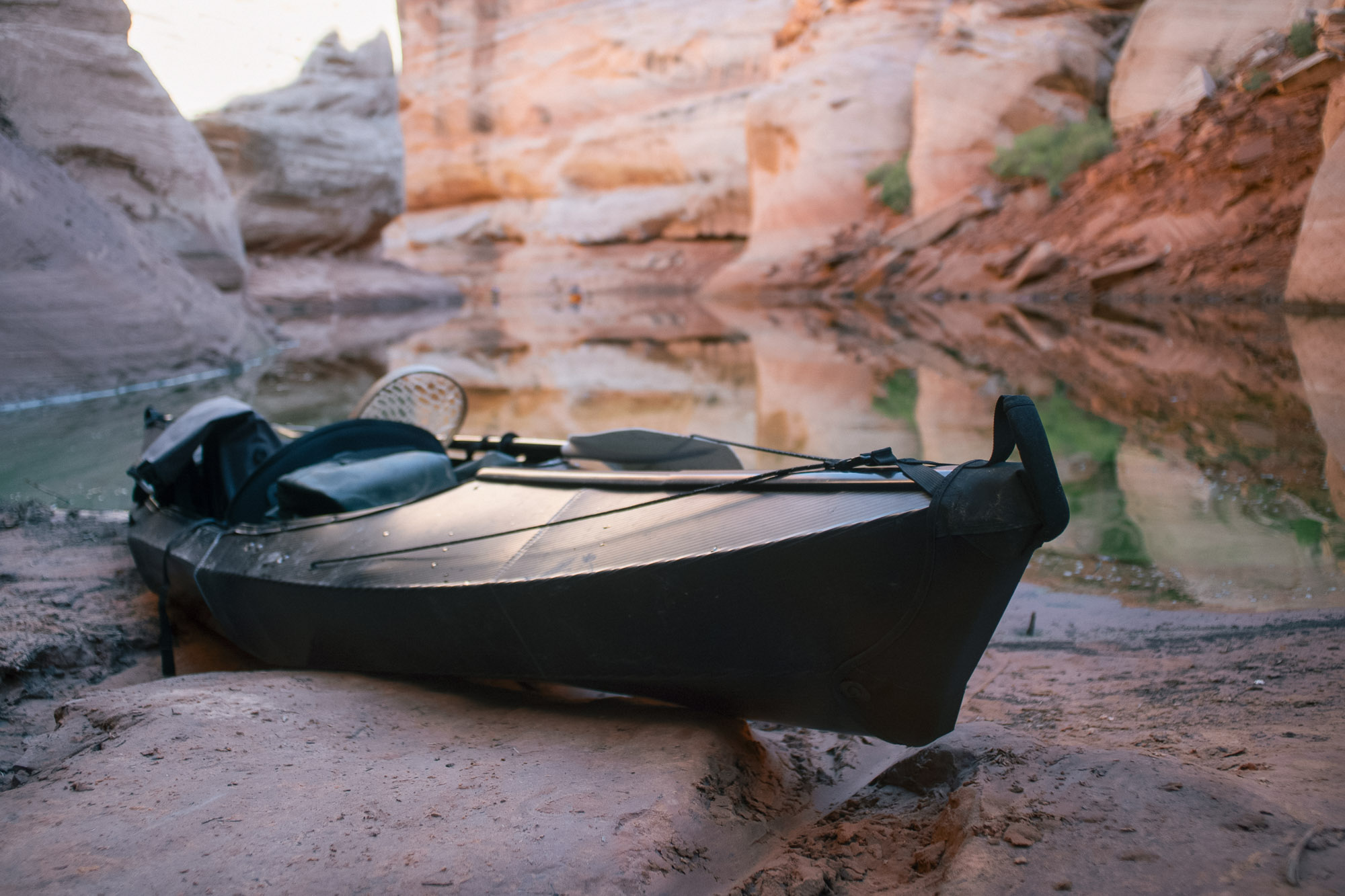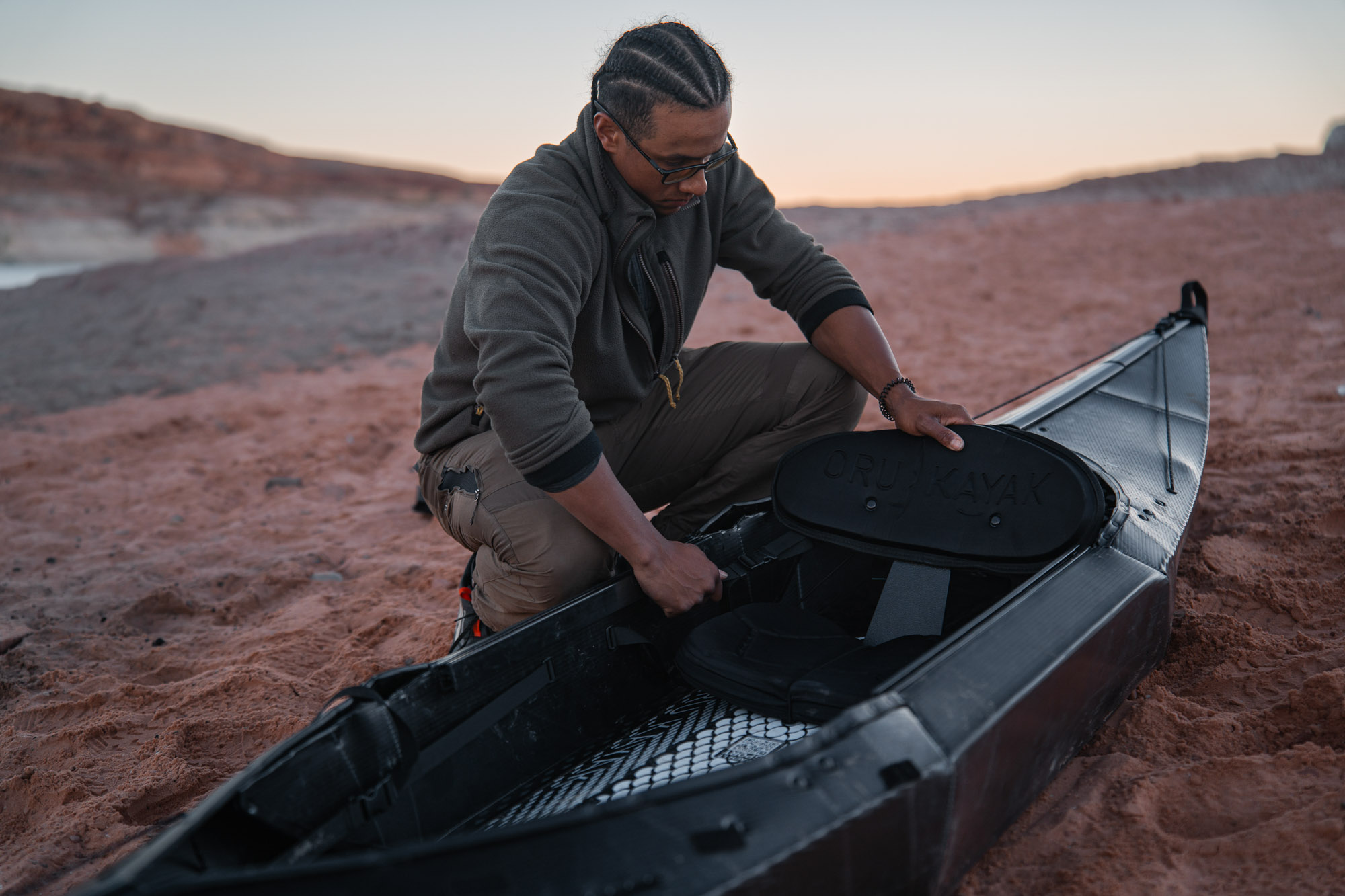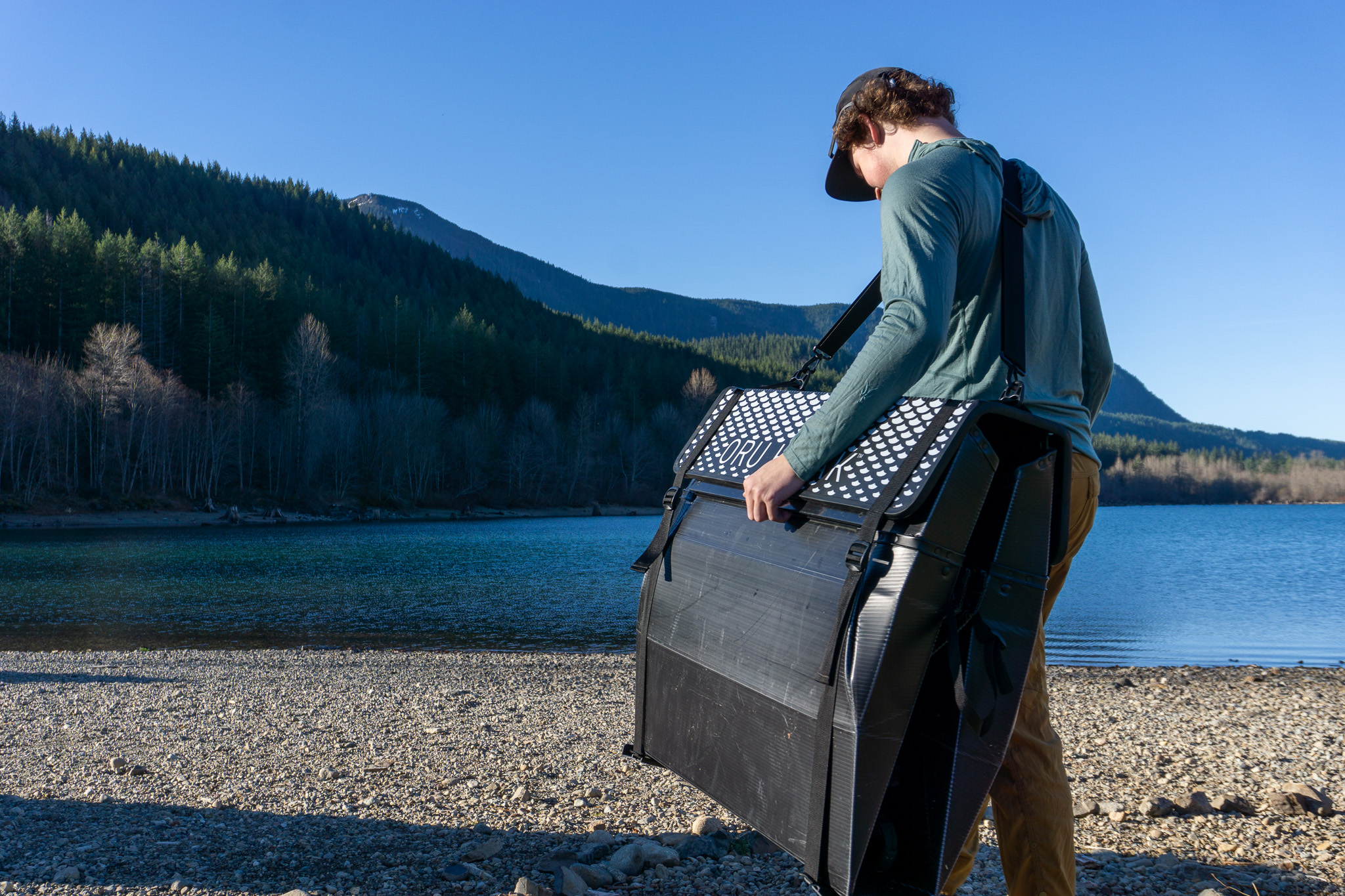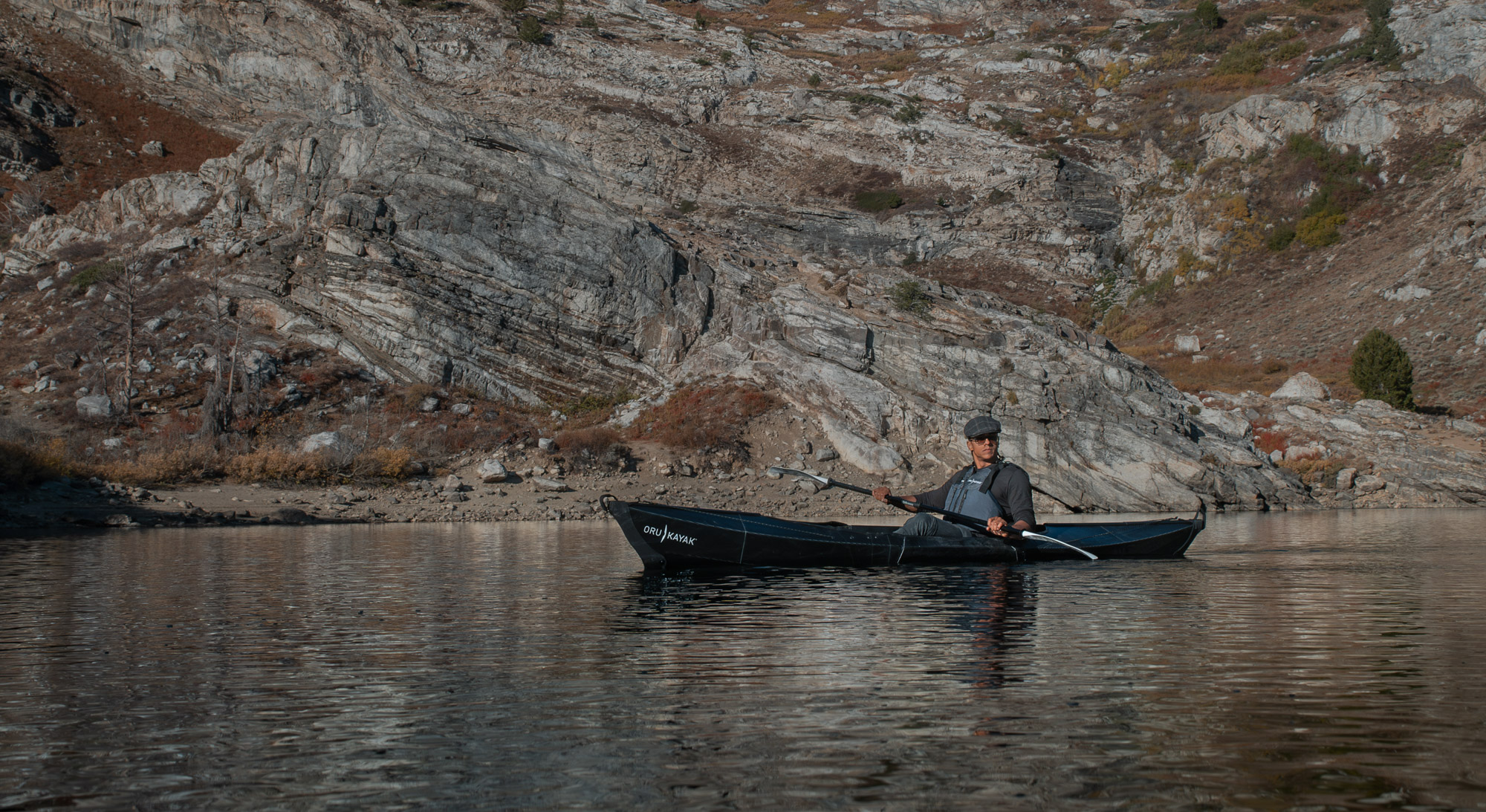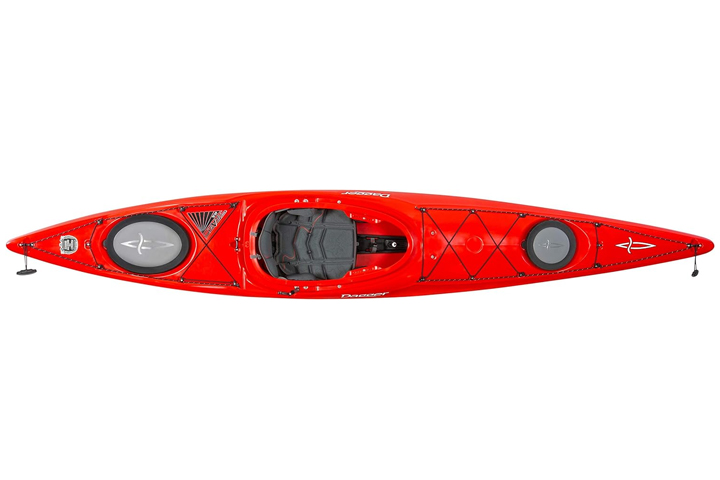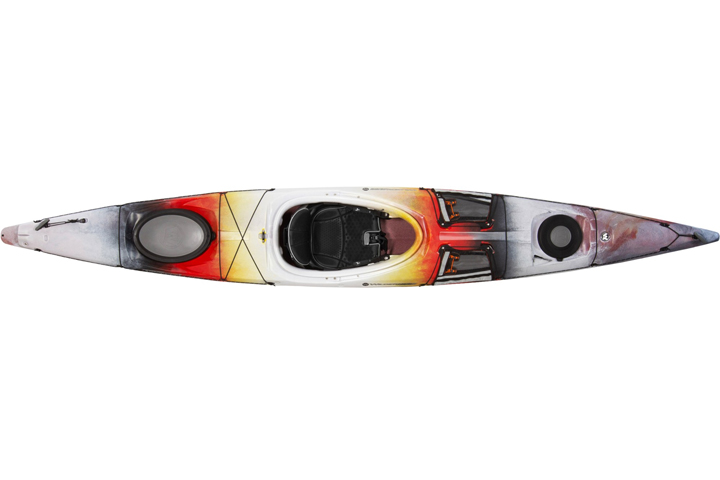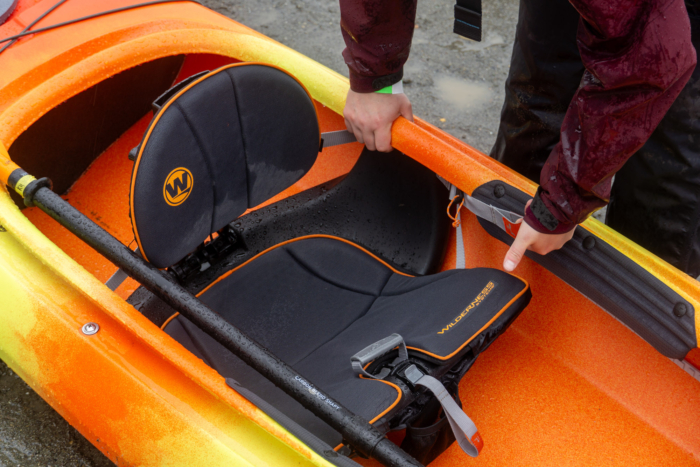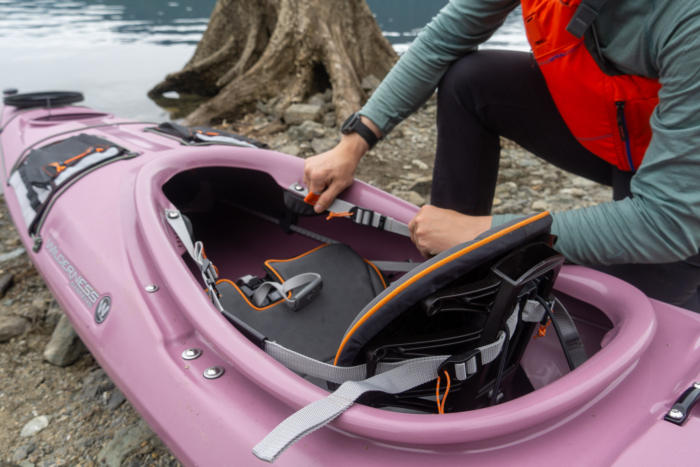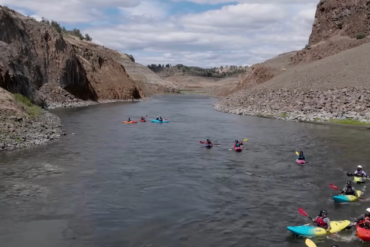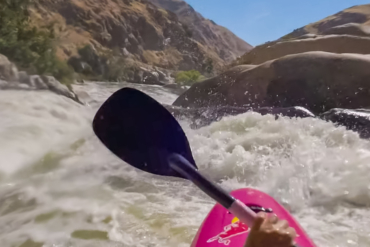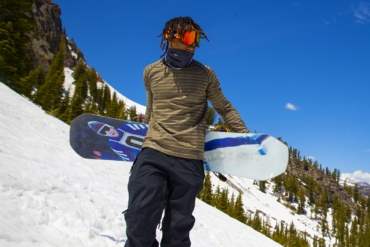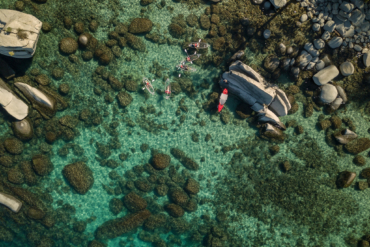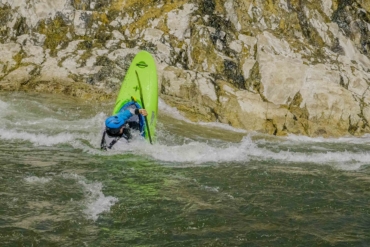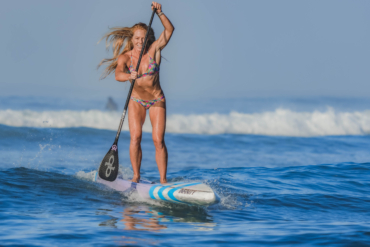Born out of necessity and refined over the ages, the best kayaks are as much tools as they are watercraft. But settling on the right tool for the job isn’t always as clear cut, and with kayaks for everything from raucous whitewater to extended jaunts between islands, the options can be dizzying.
Tapping our most seasoned paddlers, we fielded a slate of kayaks and narrowed in on the 10 of the best available today — from all-around winners like the Old Town Loon 120 to more budget-friendly options like the Pelican Argo 100X. We paddled whitewater rigs through the jungles of Ecuador, plied the shores of the Pacific, and explored inland lakes across the West to settle on our award-winning fleet.
Our testing isn’t casual, either. From sea kayak and whitewater guides to weekend tourers, our varied testing team put in hours behind the paddle on lakes, rivers, and oceans to suss out the finer details. We paddled in every condition imaginable in order to challenge stability and glide. And through it all, we paddled these kayaks like they would be used — whether that’s carrying water and a snack or a week’s worth of equipment. In the end, we settled on the following kayaks as worth recommending for any type of paddling.
Editor’s Note: We updated our Kayaks guide on May 22, 2025, to add three new worthy kayaks into the mix. The Pelican Argo 100X is a relative steal at less than $350, the LiquidLogic Remix XP blends whitewater and river overnighting, and the Old Town Malibu ePDL offers an e-bike-like experience on the water.
The Best Kayaks of 2026
Old Town Loon 120
- Style: Sit-Inside
- Length: 12'
- Width: 30"
- Weight: 54 lbs.
- Construction: Three layer rotomolded polyethylene
- Cockpit Size: 56" x 22"
- Weight Capacity: 375 lbs.
- Storage: Stern dry hatch, deck bungee storage, cockpit workdeck organizer
Pros
- Fine balance of stability and hull speed
- ACS2 seat is three-way adjustable and very comfortable
- Gel-coated interior adds impressive durability
- Deck bungee system tucks away when not in use
- Retractable carry handles
Cons
- A bit on the heavier side due to the overbuilt nature
- Storage hatch lid isn't the tightest fit
Pelican Argo 100X
- Style: Sit-Inside
- Length: 10'
- Width: 28"
- Weight: 36 lbs.
- Construction: Double layer thermoformed 'Ram-X' polyethylene
- Cockpit Size: 56" x 22"
- Weight Capacity: 275 lbs.
- Storage: Bow dry hatch, stern storage well
Pros
- Budget price
- Double-layer hull material feels pretty tough
- Nice and stable design is easy to get into and out of
- Quite lightweight and easy to carry solo
Cons
- Front bow storage hatch isn't very waterproof
- Carry handles are cheap, and broke off on us
- Seat isn't the most comfortable
Wilderness Systems Tarpon 120
- Style: Sit-On-Top
- Length: 12'
- Width: 31"
- Weight: 64.5 lbs.
- Construction: Rotomolded polyethylene
- Cockpit Size: N/A
- Weight Capacity: 350 lbs.
- Storage: Bow dry hatch, stern molded-in tank well, cockpit dry case
Pros
- Easy to get into and stable to paddle
- 350 lbs. capacity is ample and has room to carry heavy kit such as scuba tanks
- Phase 3 Air Pro seat is highly adjustable and comfortable
- Dry hatch has locking latches
- Magnetic bottle holder and accessory rails
Cons
- 65 lbs. hull weight is on the heftier side
- Glide isn't the best
Eddyline Sitka LT
- Style: Sit-Inside
- Length: 14.5'
- Width: 23.5"
- Weight: 47 lbs.
- Construction: Carbonlite ABS composite
- Cockpit Size: 33.2" x 17.5"
- Weight Capacity: 350 lbs.
- Storage: 17" stern dry hatch, 10" bow dry hatch, 6" day hatch
Pros
- Hard chine and light rocker in hull provides impressive paddling manners in rough seas
- ABS construction is lightweight and rigid
- Ample storage spread across three dry hatches, including a day hatch
- Retractable keel is easy to operate, and prevents weathercocking in windy conditions
- Cockpit, seat, and footrests work well together for a snug fit
Cons
- You'll pay for the performance
- ABS isn't as durable as rotomolded plastic
- Primary stability is less-so, and not as approachable to beginners
Hobie Mirage Passport 12.0 R
- Style: Sit-On-Top
- Length: 12'
- Width: 34"
- Weight: 83 lbs.
- Construction: Rotomolded ployethylene
- Cockpit Size: N/A
- Weight capacity: 400 lbs.
- Storage: Molded-in bow and stern wells, 8" dry hatch in cockpit
Pros
- MirageDrive GT pedal drive is one of the best we've used, and uses a flutter motion and kick-up fins
- Impressive stability across the entire hull
- Flat deck with EVA pads for standing and casting
- Aluminum frame seat to adjustable and removable
- Many fishing accessories to deck out in
Cons
- Heavy fully rigged weight makes a kayak cart a good idea
- Pedal drive and rudder systems will require maintenance, could break
- No reverse
Old Town Sportsman BigWater PDL 132
- Style: Sit-On-Top
- Length: 13.2'
- Width: 36"
- Weight: 122 lbs.
- Construction: Single-layer rotomolded polyethylene
- Cockpit Size: N/A
- Weight capacity: 378 lbs.
- Storage: Stern tank storage well, bow dry hatch, cockpit dry tackle box
Pros
- PDL pedal drive is efficient to use and easy to remove or install
- Sharper V-shaped bow and rocker makes this kayak ideal of surf fishing
- 36" width is very stable, even when standing on edge to fish
- Seat is adjustable on a shuttle track
- Built-in fishing accessories including three rod holders, a transducer mount, four accessory tracks, and a shallow water anchor mount
Cons
- Prop-driven pedal drive has a 13" draft, won't pivot up and away from obstacles
- 122-lb. boat weight necessitates a kayak cart
Old Town Ocean Kayak Malibu ePDL+ 120
- Style: Sit-on-top
- Length: 12'
- Width: 34.5"
- Weight: 126 lbs.
- Construction: Single-layer polyethylene
- Cockpit size: N/A
- Weight capacity: 349 lbs.
- Storage: QuickStash dry hatch and tacklebox in cockpit, bow and stern storage wells with bungee cordage
Pros
- Impressively zippy with five different power level modes
- Stable hull design is rocksteady
- Four handles around boat for transport
- Three molded-in fishing rod holders
- Adjustable rudder keeps your course well
Cons
- Can be a tough boat to move solo
- Need to monitor your depth to avoid damaging the pedal drive
- Price
Other Kayaks We Enjoy Paddling
- Style: Sit-Inside
- Length: 12'2"
- Width: 29"
- Weight: 49 lbs.
- Construction: Rotomolded polyethylene
- Cockpit Size: 56.5" x 21.5"
- Weight Capacity: 325 lbs.
- Storage: Locking stern dry hatch, bow deck bungees, cockpit dashboard organizer
Pros
- Hull design provides plenty of stability and tracking
- Seat is well adjustable with webbing instead of ratchet tabs
- Stern dry hatch has locking lid for snug fit
- Molded-in carry handles are easy to lift and don't swing around
- Dashboard has enough space to store essentials
Cons
- Deck organizer rattles around
- Tough to drain entirely
- Style: Sit-On-Top
- Length: 9.5'
- Width: 33"
- Weight: 54 lbs.
- Construction: Single layer rotomolded polyethylene
- Cockpit Size: N/A
- Weight Capacity: 325 lbs.
- Storage: QuickStash dry hatch in cockpit, bow and stern storage wells with bungee cordage
Pros
- Incredibly stable to paddle and easy to get into and out of
- Open top design and scuppers drain water quickly
- Up-turned bow breaks through small surf
- Four carry handles for easy transport
- Molded-in foot rests accommodate a large range of paddlers
Cons
- Trades stability for tracking ability, can be tough for some to paddle straight
- Seat is minimal
- Style: Sit-inside
- Length: 9'2" or 10'3"
- Width: 26-28"
- Weight: 46-49 lbs.
- Construction: Rotomolded polyethylene
- Cockpit size: 38" x 21"
- Weight capacity: 300 lbs.
- Storage: Stern dry storage hatch
Pros
- Solid whitewater design with comfortable outfitting
- Adds storage capacity to a whitewater shell, making an ideal hybrid kayak
- Dropdown skeg improves tracking in flatwater
Cons
- Sacrifices some whitewater ability for the added storage
- Adjustable foot pegs aren't as supportive as optional bulkhead kit
- Style: Sit-inside
- Length: 12'1"
- Width: 29"
- Weight: 28 lbs.
- Construction: Double-layered polypropylene sheeting
- Cockpit size: 69" x 24"
- Weight capacity: 300 lbs.
- Storage: Bow and stern wet storage holds, storage area behind seat
Pros
- Origami design unfolds and is ready to paddle in minutes, stores down compactly
- Solid tracking and glide
- 28-lb. weight is quite light compared to other like-kayaks
- Sport version gains updated seat, deck closure design, and accessory rails on deck
Cons
- No dry storage available
- Not the most comfortable seat for extended paddling
- Style: Sit-Inside
- Length: 12.5'
- Width: 25"
- Weight: 54 lbs.
- Construction: Rotomolded polyethylene
- Cockpit Size: 35" x 19"
- Weight Capacity: 300 lbs.
- Storage: Bow and stern dry hatches
Pros
- Highly maneuverable in waters like the surf line or rock gardens
- Bow and stern bulkheads add storage as well as floatation
- Seat outfitting is whitewater-inspired and features a 3" leg lift and adjustable thigh pads
- More narrow 25" width makes for easier paddling and straight tracking
- Drop skeg improves tracking even further
Cons
- Jack of most trades, master of none
- 12.5' length is a bit long to really whip around
- Style: Sit-Inside
- Length: 14.5'
- Width: 25.5"
- Weight: 56 lbs.
- Construction: Rotomolded polyethylene
- Cockpit Size: 36" x 19.5"
- Weight Capacity: 350 lbs.
- Storage: Bow and stern dry hatches, on-deck bungee system and mesh deck storage bags
Pros
- Excellent balance between stability and a touring-forward design
- Phase 3 AirPro seat is quite adjustable and fits the cockpit well
- Under-deck bottle holder is large enough for 48 fl. oz. bottles
- On-deck storage bags are novel design, and keep daily essentials close at hand
- Stern designed to accept optional rudder
Cons
- Heavier than ABS touring kayaks of the same length
- Stern deck is higher volume and won't roll as well
- Turning radius is wide
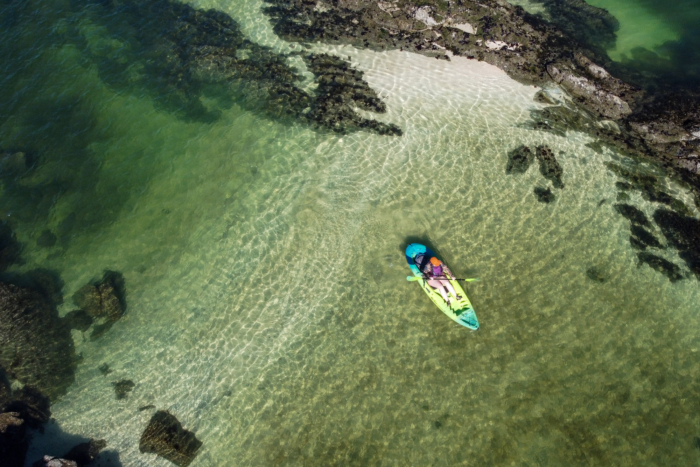
Kayak Comparison Chart
| Kayak | Price | Style | Length and Width | Weight | Capacity |
|---|---|---|---|---|---|
| Old Town Loon 120 | $1,200 | Sit-Inside | 12 ft. x 30 in. | 54 lbs. | 375 lbs. |
| Pelican Argo 100X | $340 | Sit-Inside | 10 ft. x 28 in. | 36 lbs. | 275 lbs. |
| Wilderness System Tarpon 120 | $1,229 | Sit-On-Top | 12 ft. x 30 in. | 64.5 lbs. | 350 lbs. |
| Eddyline Sitka LT | $2,799 | Sit-Inside | 14 ft. 6 in. x 23.5 in. | 47 lbs. | 350 lbs. |
| Hobie Mirage Passport 12.0 R | $1,999 | Sit-On-Top | 12 ft. x 34 in. | 83 lbs. | 400 lbs. |
| Old Town Sportsman BigWater PDL 132 | $3,000 | Sit-On-Top | 13 ft. 2 in. x 36 in. | 122 lbs. | 378 lbs. |
| Old Town Malibu ePDL | $5,500 | Sit-On-Top | 12 ft. x 34.5 in. | 126 lbs. | 349 lbs. |
| Wilderness Systems Pungo 120 | $1,219 | Sit-Inside | 12 ft. 2 in. x 29 in. | 49 lbs. | 325 lbs. |
| Old Town Malibu 9.5 | $700 | Sit-On-Top | 9 ft. 6 in. x 33 in. | 54 lbs. | 325 lbs. |
| LiquidLogic Remix XP | $1,249 | Sit-Inside | 9 ft. 2 in. x 26 in. | 46 lbs. | 300 lbs. |
| Oru Kayak Beach LT Sport | $1,499 | Sit-Inside | 12 ft. 1 in. x 29 in. | 28 lbs. | 300 lbs. |
| Dagger Stratos 12.5 L | $1,539 | Sit-Inside | 12 ft. 6 in. x 25 in. | 54 lbs. | 300 lbs. |
| Wilderness Systems Tsunami 145 | $1,699 | Sit-Inside | 14 ft. 6 in. x 25.5 in. | 56 lbs. | 350 lbs. |
How We Tested the Best Kayaks
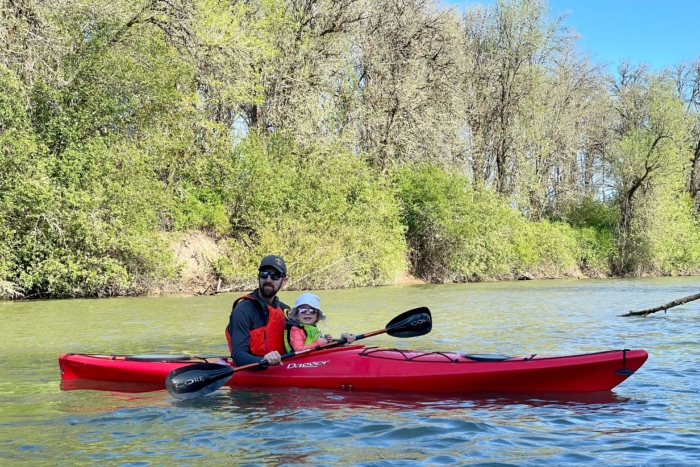
The spectrum of kayaks is vast, and we aimed to test them as they were intended to be used. Whitewater boats were bashed about and boofed from improbable drops, touring shells were sent off into the wilderness, and recreational boats challenged with entertaining testers who had seen it all before.
Our kayak testing leaned hardest on real-world testing, opting to let the boats speak for themselves. Over several seasons, we paddled these kayaks in different conditions — pushing them often to the point of capsizing to test metrics such as stability. We raced these crafts against one another to figure out actual top speeds and navigated them through tight backwaters to challenge their maneuverability.
Across all of our testing, we also sought out paddlers with different experience levels to gauge the ease of use from beginners to advanced kayakers. This also gave us a broad spectrum of body types to test for fit, and across the spread, we aimed to gain a solid view of how these kayaks perform.
In the end, we were highly confident in the kayaks listed here, and as updated and new designs hit the market, we’ll continue our testing to keep our selection fine-tuned.

Our Expert Testers
Our kayak testing team is led by Senior Editor Nick Belcaster, a multi-sport paddler located where the mountains meet the sea in Washington State. His paddling resume spans whitewater packrafting forays to cruising the Salish Sea on island overnights, and he’s dialed in on what exactly makes a kayak worthy.
To say Editor Bryon Dorr is comfortable in the water would be an understatement — an accomplished whitewater and touring paddler and instructor, he’s circled the globe seeking out beautiful water to transit. With hands in just about every facet of the paddlesport industry at one time or another, Dorr has a firm grasp on the finer points of kayak design and paddling.
Tester Wil Henkel also helps shore up our knowledge base — and has time clocked as a sea kayak guide in Washington State as well as a whitewater guide in South America. He’s a whitewater hound at heart, and recently notched a number of first descents in Ecuador on rivers that may never be the same again.
Buyer’s Guide: How to Choose a Kayak
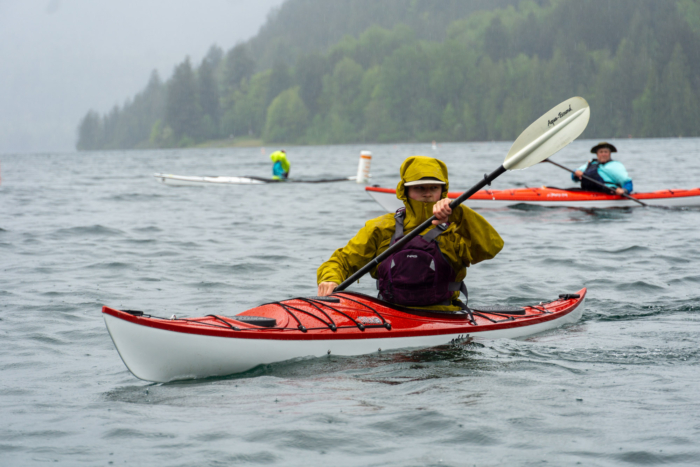
With enough buoyancy, just about anything will float your boat and get you down the river — it just won’t be pretty. And more than that, getting into an ill-fitting or limiting kayak means you’ll quickly outgrow its use, and have you right back looking for the perfect boat.
Familiarizing yourself with a few of the finer points of kayaking can help you not only hone in on exactly the right boat for you but also enjoy it more. Consider the following before you make your next kayak purchase.
Types of Kayaks
The first kayaks were business-only hunting vessels, but today, kayaks have evolved into a lineage of different craft for different waters. While there are boats that do most of it, there are also specialized kayaks that excel in one arena or another.
Sit-Inside and Sit-On-Top Designs
The first major split in kayak design is between those you sit inside of, and those you sit on top of. Sit-inside kayaks are your more traditional designs, and incorporate a semi-closed cockpit for the paddler to sit in. Kayaks like the Eddyline Sitka LT and Wilderness Systems Tsunami were some of our favorites, as they feature snug cockpits that feel much like you are part of the craft when paddling.
Sit-on-top designs instead place the paddler higher atop the kayak and are open to the environment along their lengths. This makes them much easier to get into and out of, but it also means that most of these kayaks are self-bailing, which means they have small holes in the bottom to drain water that finds its way in.
The Old Town Malibu ranked high on our list as a high-quality sit-on-top kayak, only bested by the Wilderness Systems Tarpon, which provided all of the benefits of easy entry but could be paddled faster and more predictably.
Recreational, Touring, and Fishing Kayaks
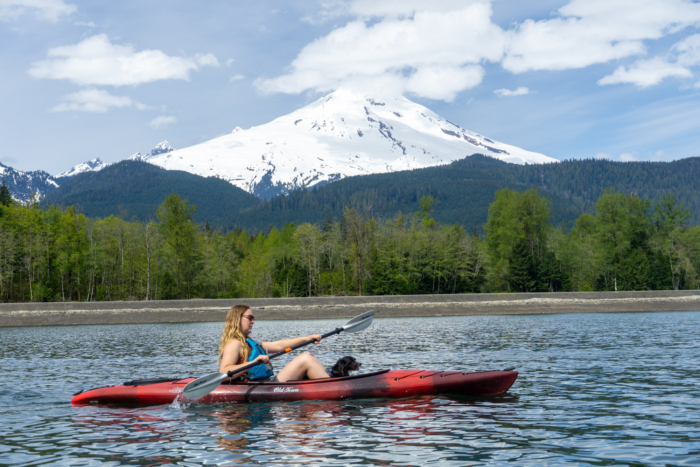
A recreational kayak will likely best serve your interests if an after-work paddle on your local lake is most often on the menu. These boats emphasize ease of paddling and good stability for a stress-free cruise — all while having enough storage to stash a day’s worth of kit away.
In our testing, the Old Town Loon stuck out as the ideal recreational kayak: easy to manage by yourself, comfortable for all-day paddling, and with enough space to carry picnic supplies and the like. The Wilderness Systems Pungo also made high marks as a kayak for just about anything and is flush with accessories to do so with.
For longer jaunts, you’ll be looking at a touring kayak — one that prioritizes paddling speed and efficiency over stability and has enough storage to carry equipment for overnight travel. The hulls of these kayaks are more often V-shaped and feature harder chines, decreasing their resistance and adding a good amount of secondary stability.
The Eddyline Sitka is the ideal touring design in our minds, and we wouldn’t think twice about paddling it on a month-long expedition. The 23.5” width keeps the shell narrow and efficient in the water, and it was easy to bring the Sitka up to speed. A better budget option is the Wilderness Systems Tsunami, which had similar paddling manners, just decked out in a more budget-friendly rotomolded plastic design.
Fishing kayaks are made for the hunt, focusing heavily on stability to allow anglers to cast from their decks. Most also incorporate some type of alternative propulsion system like a pedal drive to free up hands while manipulating fishing rods, and some will come fully decked out with mounting options for fish finders, trolling motors, or anchors.
It’s tough to beat the Old Town Sportsman BigWater PDL when it comes to kayak angling. This fishing barge is a full 36” width and sports a multi-hull design for unprecedented stability, but can scoot pretty well with the integrated pedal system. The Hobie Mirage Passport is a bit lighter on features, but it was our shallow-water fishing winner, as it hosts a flipper-style pedal drive.
Hull Shapes
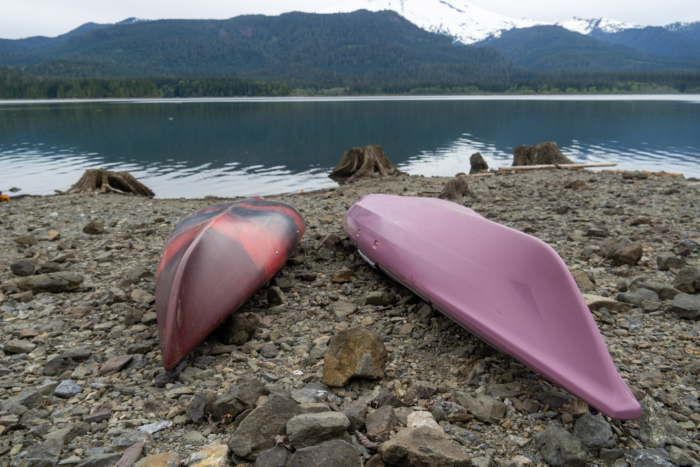
Kayaks can be bisected in multiple ways, with each shape affecting a different element of its performance. The first is the hull shape or profile, which can be imagined by drawing a line from one side of the kayak to the other across its width.
This profile affects the action of the kayak below the waterline, meaning stability and tracking are affected. There are four main hull shapes, with each providing a different paddling experience.
A V-shaped hull is one that cuts through the water like a knife and balances the kayak on a single point. This makes for a very streamlined hull, and tracking is excellent in boats that use them. The trade-off is stability, which can feel a bit tippy at slower speeds or for beginners.
Similarly designed, round hulls aim to provide similar tracking performance, but smooth out the edges a bit and build in more stability. These hulls are an excellent all-around choice and will shoulder waves well should you encounter them. Flat hulls lean even further into the stability realm and start to give up some tracking ability for it. They are often quick to turn, which can lead to a wag while paddling.
Finally, pontoon hulls sport two defined points that balance the kayak on the water, with a drawn-in center. This combines the tracking of a V-shaped hull with the stability of a flat hull and is commonly seen on fishing kayaks.
Chine Shapes and Rocker
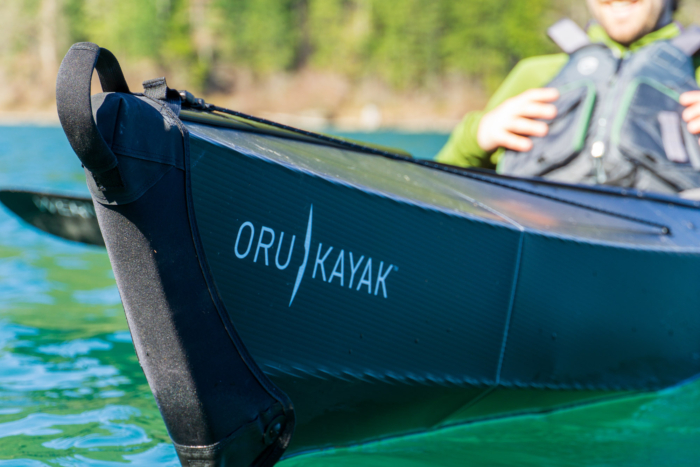
The chine is the interface between the sides of the kayak and the bottom, which impacts both stability and maneuverability. A hard chine is one that is obvious where the two surfaces meet, forming an edge. This edge is one that can be pressed against the water and used to lean over the boat in rough water.
A soft chine has no obvious edge, which makes it rock from side to side without much resistance. This is a more stable boat for beginners, or for flatwater where waves aren’t common.
Finally, a kayak’s rocker is its profile when viewed from the side and concerns the upturn from bow to stern. Kayaks with less rocker have longer water lines, which makes them quicker and improves tracking. A more aggressive rocker allows a boat to crest and punch through waves and pivot around more easily with less resistance.
Length and Width
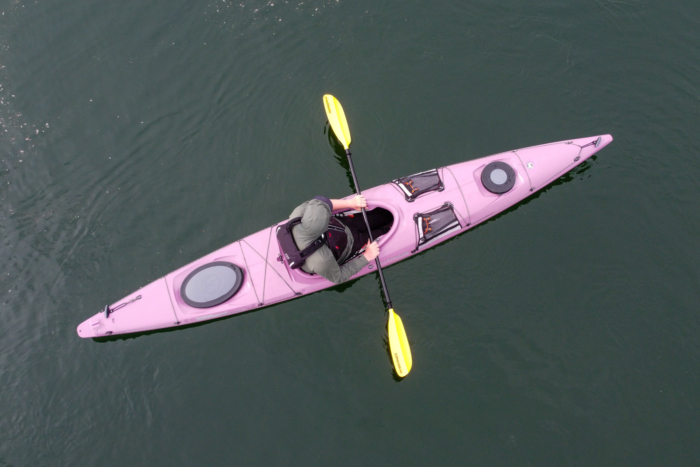
The size of your kayak makes an incredible difference in its performance, with length being related to speed and tracking, and width commanding stability. Both of these measurements also relate to the volume of your kayak, which will be important for ensuring it floats on its lines with a paddler inside.
Length
Kayaks can range from diminutive 5.5-foot whitewater playboats to 20-foot racing shells, and there are many different kayaks between those two points. Longer boats will track more efficiently, while shorter ones will turn quicker.
Recreational kayaks are mostly 10-12 feet long, while touring boats are more often 12-17 feet. When deciding between sizes, consider the amount of gear you’ll be taking, as well as your weight, as often times kayaks are available in different lengths to accommodate different people. Cockpit sizing will also play an important role here.
Width
The width, or beam, of your kayak has a good bit to do with the overall stability, with wider kayaks obviously being more stable, and more narrow kayaks lesser. The trade-off in a more narrow kayak, however, is in speed and tracking, and with a smaller footprint to push through the water, touring-style kayaks can move much quicker than wider recreational boats, and use shorter paddles that are easier to move through the water.
Most kayaks are around 20-30” wide, with more recreational boats like the Old Town Loon (30”) and Wilderness Systems Pungo (29”) being closer to the wider end of the spectrum, and touring craft like the Eddyline Sitka (23.5”) being narrower. Some more specialty kayaks made for fishing can be quite wide, such as the Old Town Sportsman at 36”.
Tracking and Glide
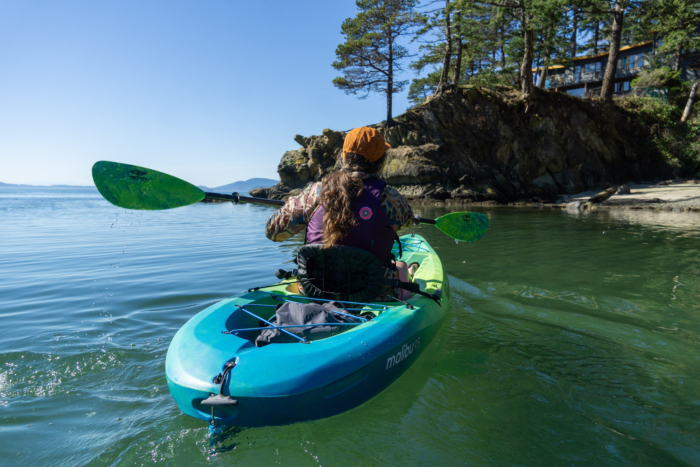
No one wants to paddle an unruly raft, and proper tracking and glide ensure your kayak is efficient in getting where you’re going. To best gauge the straight-ahead speed and handling of these kayaks, we tested them side-by-side and noted the ease or difficulty in keeping them on the line.
Kayaks with pronounced side-to-bottom transitions (known as chines) and V-shapes won out in these tests, with the Dagger Stratos reigning — due in large part to its surf-inspired hull and skeg. Followed closely by the Eddyline Sitka, Wilderness Systems Tsunami, and (surprisingly as a packable boat), the Oru Kayak Beach LT Sport, these efficient kayaks stuck tight to their line and continued the furthest off paddle power.
Filing in behind the more touring-oriented boats are the longer recreational boats, including the Old Town Loon, Wilderness Systems Pungo, and Tarpon. These kayaks are a bit wider and have soft chines that increase stability, but that can also make them a bit less precise when it comes to tracking. Often a good J-stroke was needed to keep these kayaks on a rail.
Angling barges like the Old Town Sportsman BigWater generally track quite well due to their unique tri-hull shape, but are tough to get up to speed and subsequently lack in the glide department. The same can be said of the Hobie Mirage Passport, which generally holds a good line due to its rudder, but has a lot of width to contend with moving far.
Stability

The stability of a kayak is a combination of several factors, but most importantly, it breaks down into two types. Primary stability is the even-keeled feeling you have when sitting in a kayak floating on the water, and it’s for this reason that beginners are better served by boats with more of it.
Recreational kayaks most often lean on primary stability, and boats like the Old Town Loon, Malibu, and Wilderness Systems Pungo are all easy to feel settled into — often needing little body position adjustment at all to stay that way. Sit-on-top kayaks like the Wilderness Systems Tarpon were close to this performance, but a higher center of gravity meant a little more motion.
Fishing kayaks like the Hobie Mirage Passport and Old Town Sportsman both rely heavily on primary stability to stay even-keeled as you faff about with tackle or cast. It’s this stability that allows paddlers to even stand on the decks of these kayaks like standup paddleboards.
When balanced further on its edge, a kayak exhibits its secondary stability, which can be important for navigating choppy off-shore waters. This may initially feel like a ‘tippy’ sensation, but advanced paddlers leverage this stability to crest awkward waves and paddle otherwise uncalmed passages.
Kayaks like the Dagger Stratos and Eddyline Sitka both sport hard chines, which are the pronounced edges between the sides and bottom, and allow them to be edged more effectively in rough water. The Oru Kayak Beach LT Sport also has defined chines, but is relatively flat beneath the paddler, making it harder to get on edge effectively.
Maneuverability
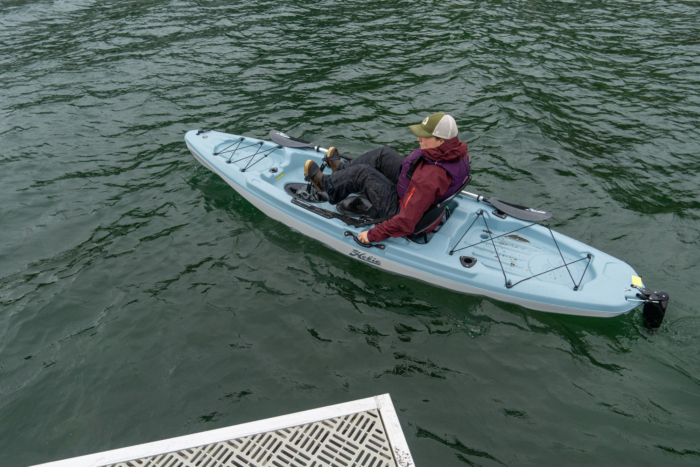
Straight-line paddling won’t be all you do in a kayak, and to test these kayaks on their maneuverability we paddled them in our local lake — making use of a slalom course of buoys and testing their ability to spin a full 360.
Longer touring kayaks like the Eddyline Sitka are tougher to get to come around, and while you can lean them over a good bit more than flat-bottomed hulls, the full 14.5” length and V-shaped hulls are harder to get to move around quickly. The Wilderness Systems Tsunami struggles in the same way but benefits from slightly less aggressive chines, which don’t edge as hard during slow-speed turns.
Flat-bottomed kayaks like the Old Town Malibu enjoy a great amount of turning ability, sometimes even to the deficit of being able to track straight. A shorter length also greatly improves the turning radius, and being 9.5’ long undoubtedly helps the Malibu spin circles.
The hybrid V-shaped hulls of the Old Town Loon and Wilderness Systems Pungo tend to balance between glide and maneuverability well, and while not the quickest to turn a 180, they are faster than the longer touring kayaks to get flipped around.
Fishing kayaks like the Old Town Sportsman BigWater PDL or Hobie Mirage Passport favor stand-up stability over maneuverability, but with one crucial caveat: Pedal-drive kayaks with rudders can often turn on a dime, allowing them to tuck into reed beds or around structures for fishing.
Seating and Comfort

While more recreational-minded craft won’t need a plush seat for long days in the saddle, it’s nice to avoid the dreaded dead butt syndrome, and not only that, a comfortable and supportive seat is important to support your paddling position and make the most of your strokes.
The Old Town Malibu, Pelican Argo 100X, and Oru Kayak Beach LT Sport all incorporate fairly minimal seats, with only the backrest being adjustable forward and aft on the Malibu and Argo 100X, and the Oru gaining the ability to adjust it up and down. These basic seats are quick to get in and go, but weren’t the most comfortable for all-day paddling, in our experience.
The seats on recreational boats like the Wilderness Systems Pungo or Old Town Loon are more comfortable for all-day paddling, and incorporate additional foam padding and three-way adjustability to dial in the fit. The ability to raise your legs in both allows for bracing on the thigh pads, which is a very secure way to paddle.
The adjustable foot braces on the Eddyline Sitka were easy to manipulate and low profile, keeping clutter down in the cockpit while still providing the support needed. These, in addition to thigh braces, allow you to fully brace your lower body — an important ability for leaning a boat over or getting the most out of your stroke.
The thigh braces on the Dagger Stratos are adjustable, and when coupled with the ‘leg lift’ adjustability of the seat, create a locked-in feeling that borrows heavily from the world of whitewater paddling. This makes the Stratos ideal for rock garden paddling, and it can even be paddled in Class II and III rivers.
Storage
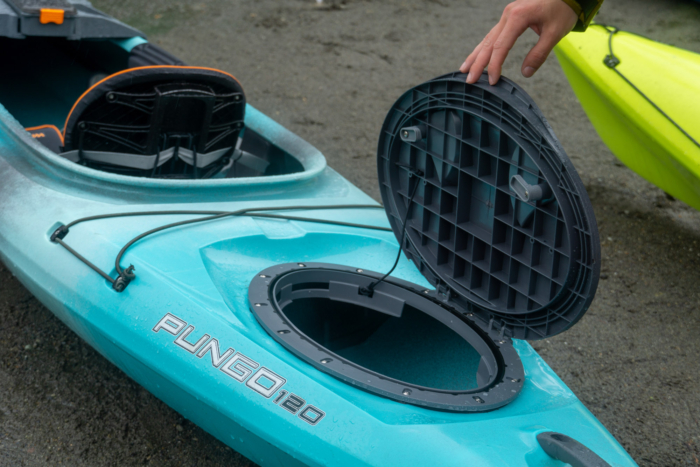
From a safe spot to stash your phone to cargo holds for an entire expedition, storage on kayaks ranges widely, and we tested each on their capacity and waterproofing. Cargo hatches were hosed down, checked for moisture, and jammed full to see how much we could feasibly get into them.
Storage on the Oru Kayak Beach LT Sport is limited to a compact area behind the seat where we could toss a drybag or two, as well as the areas in the bow and stern behind the bulkheads. It’s important to note that these are only accessible while constructing the kayak, and that the bulkheads are only set in place and not waterproof.
The Old Town Malibu is similar in that it only hosts a few storage wells in the bow and stern, but does add a small hatch in front of the paddler to toss a phone or wallet into. These wells will get wet in rougher water, so it’s a good idea to keep your kit tucked away in waterproof dry bags.
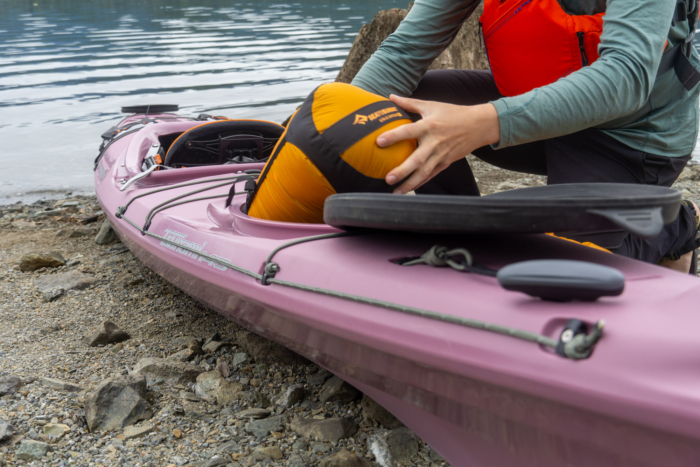
Recreational kayaks like the Old Town Loon start to pile on the storage, and while some smaller kayaks won’t host a storage hatch, both the Loon and the Pungo tuck one into the stern. These waterproof cargo hatches are closed with exterior lids, and are sealed from the rest of the kayak with a bulkhead. In practice, we could stash enough equipment for a light summer overnight in these areas.
The sit-on-top design of the Wilderness Systems Tarpon frees up some extra space for the addition of a rear tank well, which can accommodate even scuba tanks and is covered by a stretch-mesh deck to keep things secure. The sit-on-top nature of this kayak also makes retrieving kit while underway possible.
Touring designs like that on the Eddyline Sitka, Dagger Stratos, and Wilderness Systems Tsunami all host waterproof hatches in the bow and stern, which are blocked off from the rest of the hull with glued-in bulkheads. Access to these hatches is through waterproof lids on the deck, and across the board, we were able to fit enough equipment for overnight camping in these kayaks. Even some whitewater kayaks like the LiquidLogic Remix XP are hybrid designs that add on hatches to store kit in.
Construction
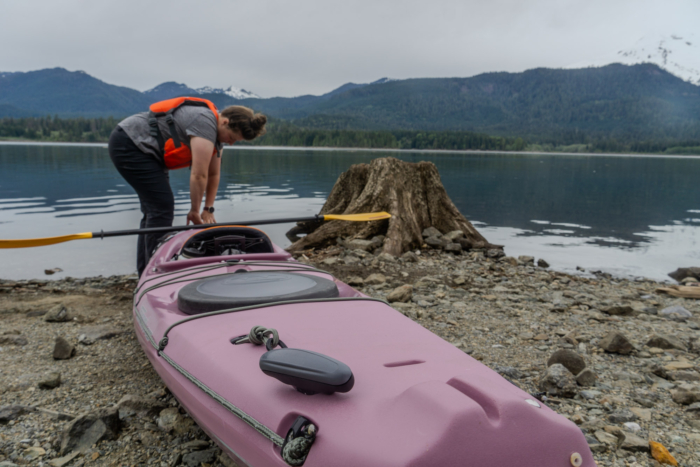
Modern kayaks are most often made from either rotomolded polyethylene plastic, layered ABS plastic, or composite materials such as fiberglass or Kevlar. Because of its cost, we opted to avoid spendy composite craft in our testing, and instead focus on more approachable plastic boats.
Rotomolded polyethylene boats are cheaper to produce and are generally regarded as being the most durable option of the bunch. We dragged the Wilderness Systems Tsunami across some gnarly barnacled shorelines, and besides some scratches, no harm was done.
The thickness of that plastic does play a role in overall durability, however, and thinner boats are liable to do something called oil canning, where the normal shape of the hull is pushed out of place, like denting a can. This can occur on particularly warm days when loading a kayak onto a vehicle, and while it most often resolves, some dents stick around.
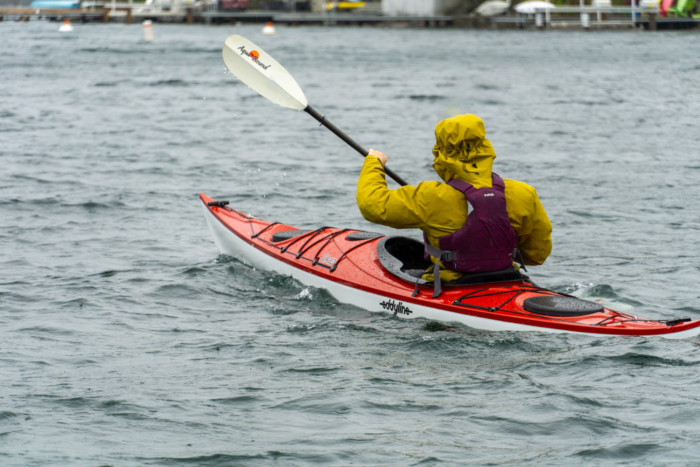
Kayaks like the Old Town Loon are built robustly, with thicker hulls and even a gel coat on the interior to increase durability. Some manufacturers will even go a step further, adding foam bolsters like in the Dagger Stratos that aid in making it a more rigid craft for heavy swells.
ABS plastic boats are constructed in a different manner and are thermoformed — meaning the sheets of material are heated until they are pliable, then vacuum-formed into the shapes of the hull. This process allows for multiple layers to be added together, greatly increasing the rigidity of these kayaks. ABS is also a good bit lighter than polyethylene constructions, which can be important for long touring kayaks.
The Eddyline Sitka surprised us the first time we picked it up, and that’s all due to the ABS design. This also gives it a great deal of rigidity across its length, which is important in a rockered boat that will be nosing through waves in rough seas.
Price & Value

There’s no denying that kayaks aren’t a cheap piece of kit to put your hands on, but that also doesn’t mean that you need to empty your pockets to be able to get into one. In our experience, there are specific tiers of kayaks that can be broken down by what you get for your money.
Budget
Budget kayaks are most often made from rotomolded plastic, which is an easy-to-replicate and cheaper production method for turning out mass quantities. This is also a very durable material, but the price for that durability is weight. Features may be more limited, with less organization, simpler seats, and less built-in adjustability.
Ranging from around $400-700, kayaks like the Pelican Argo 100X ($349) are typical of this price range and you’ll find that most are around the 10’ length. The Argo 100X still incorporates a good number of features such as a small dry hatch and cupholders, but the seat is certainly only ideal for day use.

Mid-Tier
Between $1,000 and $1,500 are the bulk of the longer, more well-outfitted recreational kayaks. These are often around 12’, and will host more adjustable seating and comfort options, and more storage including bow and stern hatches.
The Old Town Loon 120 ($1,200) has a supremely comfortable seat that rivals some touring boats, and goes heavy on the storage, with a stern hatch, deck bungee lines, and a cockpit organizer for stashing essentials. The Wilderness Systems Pungo 120 ($1,219) and Tarpon 120 ($1,299) are similarly outfitted, and the packable aspect of the Oru Kayak Beach LT Sport ($1,500) makes up for its lack of storage.
Premium
Beyond $1,500 is the realm of touring kayaks, like the Dagger Stratos 12.5 ($1,539), which is specced out for long day tours and sports a highly comfortable seat and brace system to dial in your fit. The Wilderness Systems Tsunami 145 ($1,699) is a similar bucket, and can even go for whole weekend trips with its larger bow and stern hatches. The rotomold polyethylene design on both of these boats helps to keep the price down.
Adding complicated pedal-drive systems ratchets the price up to north of $2,000 on most kayaks, and the Hobie Mirage Passport 12.0 R ($1,999) hosts one of the better systems we’ve enjoyed so far. ABS construction, too, requires a bit more of your pocketbook, but the Eddyline Sitka LT ($2,799) is well worth it, with one of the highest paddling performances in our testing.
Finally, fully-specced fishing kayaks can certainly command the big bucks, but the Old Town Sportsman BigWater PDL ($3,000) is just about the best we’ve used, and from the pedal drive to its ample storage, this is the craft we want for reeling in the big one. Want even more pedal power? The electric prop-drive Old Town Malibu 120 ePDL ($5,500) is wildly pricey, but the performance (and experience) is undeniable.
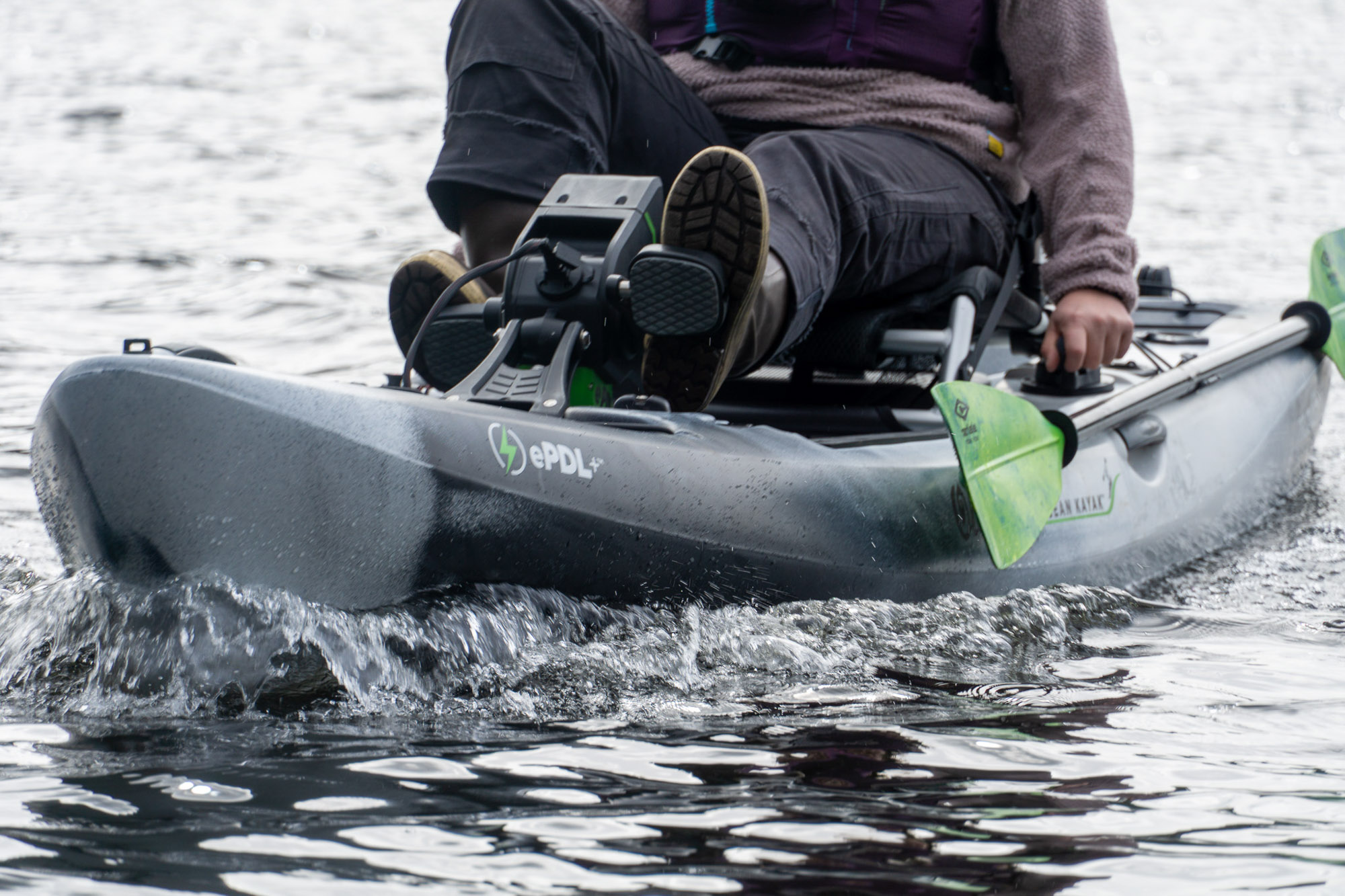
Frequently Asked Questions
As with everything, it depends: mostly on where you want to paddle, but also the stability you’re looking for out of a kayak. Sit-on-top kayaks have more inherent stability than sit-in kayaks, and are much easier to get in and out of, making shore launches a breeze. They are going to be a more exposed paddle, however, with splashes coming into the boat and draining through the scupper holes.
Sit-in kayaks are a more traditional design, and feature a cockpit for the paddler to sit down inside of. This means you can use your body a good bit more for control, but it can be a bit more confined for some paddlers. Their narrower designs also make them faster kayaks, meaning more intermediate paddlers with touring aspirations may appreciate them more.
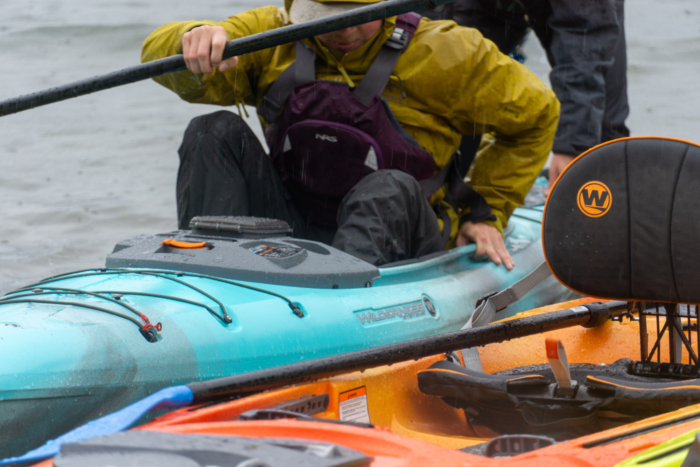
While there are many kayak brands out there, we’ve greatly enjoyed the boats we’ve paddled from core players like Old Town, Wilderness Systems, and Eddyline. Dagger as a brand is more focused on whitewater, while Hobie offers up a number of unique pedal designs. Oru is relatively new on the scene, but is making a splash with its fold-up designs.
First, consider the type of kayaking that you’re looking to do. A recreational kayak primed for a day out on the lake isn’t going to be a comfortable craft for taking on breakers in the ocean with, and trying to fish from a narrow sea kayak will undoubtedly see a dunk or two.
Once you’ve keyed in on the type of kayak you’re after, begin considering options such as length, which will affect how quick or nimble your kayak will be, as well as how much kit it can carry. A 10-12’ kayak is ideal for most recreational use, while 14-18’ kayaks are primed for touring.
Finally, consider the outfitting you’ll want to use. Some kayaks offer highly adjustable seats and thigh padding to dial in your fit, while others will add on storage in the form of hatches or deck compartments. Consider what your day-to-day use will look like, and buy based on what features you’ll get the most use out of.
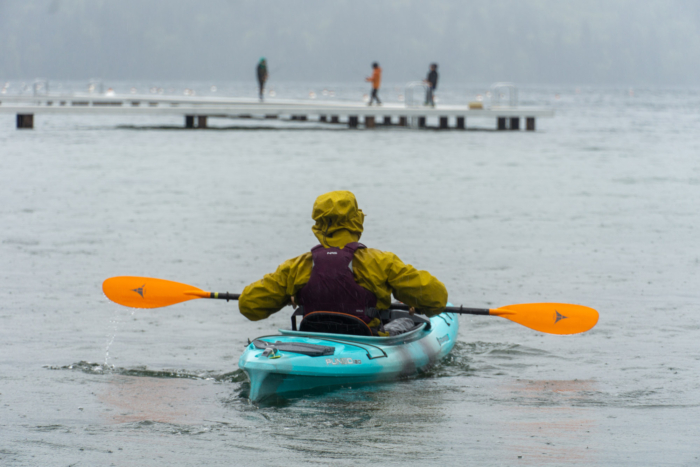
The vast majority of kayaks will fit most people, though there will be some variables to consider. A longer kayak will be a faster and better tracking vessel, which makes them ideal for touring, while a shorter kayak will be more maneuverable and easier to handle.
The size of the paddler should also be considered, and often kayaks will be offered in different lengths to accommodate this. For example, the Wilderness Systems Pungo is available in a 10.5’, 12’, and 12.5’ length. These correspond to smaller, average, and larger paddlers.
The size of the cockpit should also be considered, as features like seats and footrests can be adjusted, but only up to a certain point. Sit-inside kayaks can be a bit more snug, while sit-on-top kayaks offer up a good bit more room for paddlers.
While it’s always possible, and you should plan accordingly (wear your PFD!), kayaks don’t flip out of nowhere, and capsizing isn’t common with proper use. Boats with more primary stability and flatter bottoms will resist flipping, making them more popular for beginner paddlers.
As you gain more paddling skills, you’ll benefit more from a kayak with added secondary stability, which is the stability felt when leaning the kayak over on its side. Being comfortable in this position takes some skill, but will also aid in keeping your kayak from flipping in rougher waters.
And, if your kayak does flip, don’t panic! Kayaks are plenty buoyant, and most rec boats will right themselves. For more advanced craft, consider learning how to roll the boat while you are still inside — a skill that will pay dividends in the long run.
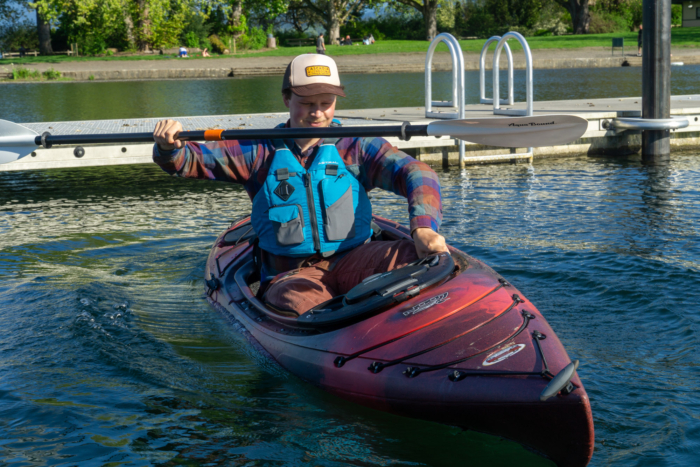
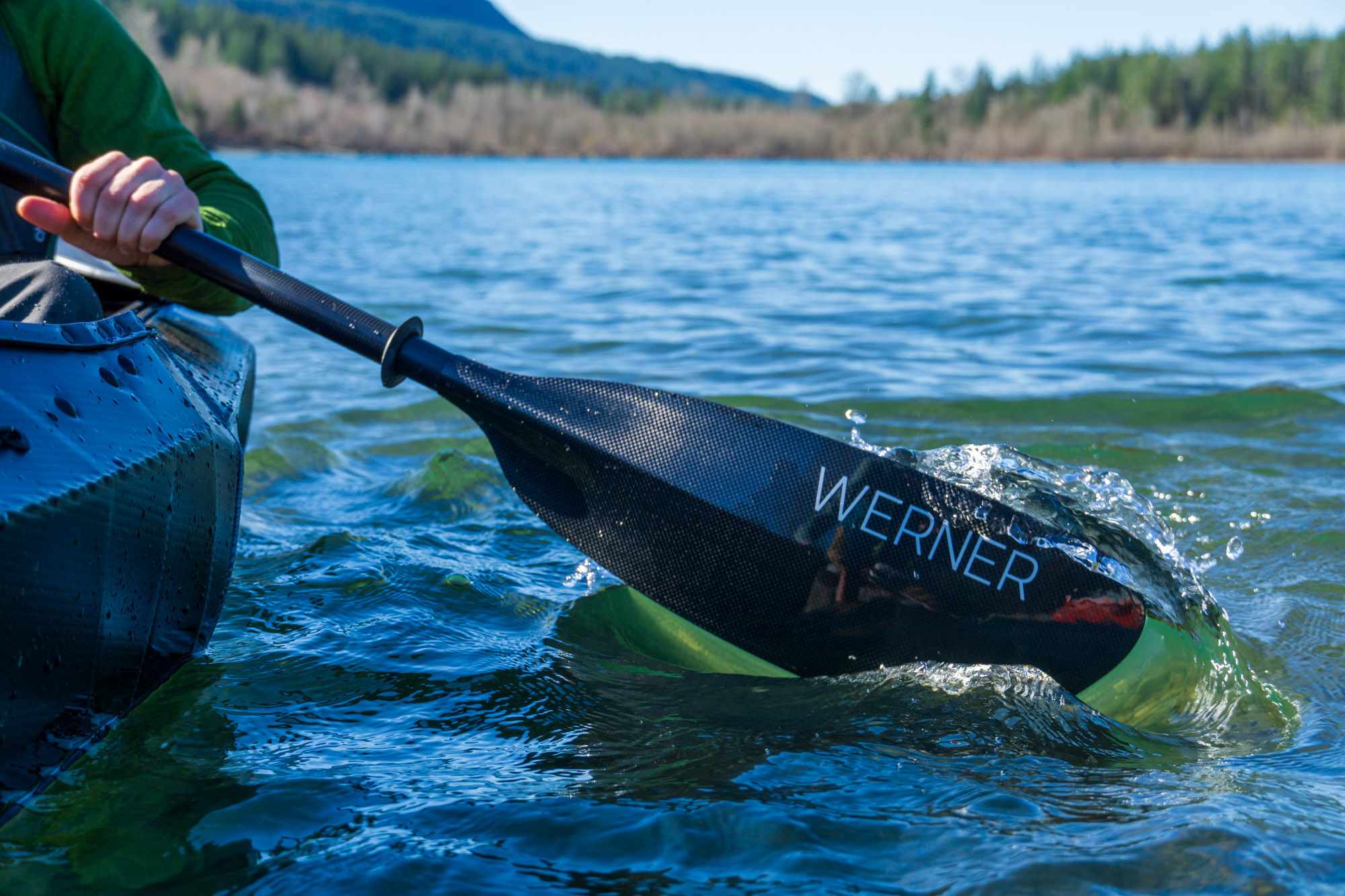
The Best Kayak Paddles of 2026
Up a creek again? A good kayak paddle is essential to making the most of your time out on the water, and we tested the best from Werner, Aqua Bound, and more!

The Best PFDs of 2026
You can have all the paddling chops in the world and still take the dunk. We’ve tested the range of PFDs and found the best to keep you right side up.

